Casting a Greener Line
Transforming Recycled Materials into Unique Fly Lures
For dedicated craftsmen like Braedan de Lange, who has spent years perfecting his art with innovative, recycled materials, fly tying is as much about sustainable creativity as it is about the pursuit of the perfect catch. And when it comes to elevating the craft with repurposed elements like recycled swing tags, Braedan is in a league of his own—challenging conventional methods and inspiring a new wave of eco-friendly innovation on every cast.
In this journal, Braedan de Lange shares his creative journey in sustainable fly tying—detailing how his blend of necessity and curiosity leads him to innovate with repurposed materials like recycled swing tags, how these techniques shape his unique approach, and the gear that keeps him comfortable and focused during long days of crafting the perfect fly.

Can you walk us through your creative process when crafting a new fly?
For the most part, my creative process is dictated by either necessity or curiosity. Fly tying has a very practical element to it in that I want to create something to catch a fish—be it a trout in our rivers or a saltwater critter out in the ocean or estuaries. From this, I am trying to whip up something that will mimic the fish’s natural food source. For trout, this will be patterns that look like a range of aquatic insects like mayfly and caddis to larger terrestrial insects like cicadas and blowflies. For saltwater, I will be trying to tie patterns that look like baitfish, shrimp, and crabs.
The other driver behind my creative process often comes from being curious about how a certain technique is used or how a new material can be incorporated into a pattern. Often, this leads to a pattern that I may not fish but have simply tried to enjoy the creative process behind learning it and tying it to a level I am happy with in its presentation. A recent example is playing with “married wings,” where you take different coloured wing feathers and join—or marry—the different coloured fibres together to make a wing for a wet fly.

One of the "married wings" that Braedan has created.
What makes your fly-tying style unique, and how do you choose and incorporate different materials to bring your lures to life?
I don’t know if I would necessarily say I have a unique style for my fly tying, but perhaps an interest beyond just the necessities of what I fish gives my tying a wider range of patterns to demonstrate. I am also fortunate enough to have been selected to be part of the Semperfli Pro Team based in the UK, which has given me access to some amazing materials. It is always fun to see how I can incorporate the myriad of synthetic materials they have created into my patterns.

A close-up of the Coloburiscus Nymph tie.
How does sustainability influence your creative process?
I think sustainability is something a lot of anglers think about, and it is one of the reasons I love partnering with Desolve. From Project Zero to the Leave Only Trails Fund, it is great to work with a company that has raised the bar on social responsibility for our environment. Using the swing tags for a caddis nymph took inspiration from the way Desolve uses recycled products in their materials. While opening a package of shirts from them, I noticed the similarity between the swing tag string and other yarns I use (like Dirty Bug Yarn) and that I could wrap it around a hook to form a body.
The old chocolate wrapper that was sitting on my desk also got incorporated as a flashy wing case on that one. I have also used the foam that comes with the waders to create a floating emerger pattern for when trout are feeding during a hatch.

A perfect way to repurpose the foam that comes with your waders.
Do you have any rituals or routines when you sit down to tie flies?
A good tying session for me definitely has a few necessities to go along with it. If I am tying in the morning, then a coffee from one of the local Island Bay cafes will be close at hand. Although an evening session will be accompanied by a beer from one of the local breweries (can’t go wrong with a good can from somewhere like Double Vision) or a nice whiskey.
Secondly, there is definitely some music. It is very rare that I will not be listening to something while tying. This will range from anything from Blue Grass and Reggae through to, and to be fair more likely, Punk and Metal tunes. I would love to say that there is some order to my workspace, but more often than not, it is in one state of chaos or another—though I seem to have a rough idea of where things are, so it works.

Braedan in action, tying up a fly.
What first sparked your passion for the sport? How has your approach or philosophy changed over time?
Growing up in the Hawkes Bay, fishing was always on the radar. As a kid, we were often taken to the mouth of the Tukituki River with surfcasters and spinning rods chasing kahawai. It was a trip down the Ngaruroro on a canoe, though, with a friend and his dad who first introduced me to fly fishing, though. I seem to have taken a liking to it. It wasn’t until many years later, though, that I gave it a proper nudge—learning to cast a fly rod on the Te Awakairangi/Hutt River and Wainuiomata River in the Wellington region.
To begin with, as with most, catching a fish was the goal and took a long time to do this, with my first local brown trout taking a lot longer than I would like to admit. While I will not turn my nose up to catching big fish or heaps of fish, I would say these days the motivation to get to those points is fuelled differently than just the end goal of catching something in itself. Often, there is a new fly to try or a problem to ponder—it is those little things on the journey that motivate me just as much now. The mental health benefits definitely play a major part here as well.
There is nothing quite like being on the water with that singular focus of casting a fly to catch a fish, while surrounded by nature, which helps to take the stresses of the day or week away. By the end of the day, regardless of the results, I always feel much more relaxed afterwards.

Braedan wearing Desolve gear to keep comfortable while fishing.
How does tying your own flies deepen your connection to fly fishing?
There are a few reasons that could be talked about here. For me personally, though, I think the appeal was the creative elements and the options to customise the patterns to what I needed. Tying flies is definitely a creative outlet, and it can be a lot of fun tying bits of fluff, feather, and flash to a hook and seeing what you can make to fool a fish.
While being able to adapt and customise patterns to what you need ticked a very practical box for me. These days, I cannot help but spend some time looking under the rocks, trying to get an idea of what critters the fish may be feeding on and adjusting my patterns to suit. On top of this, it is just cool and very rewarding to be able to say that I caught a fish on a fly I tied.
I guess the next step would be to build my own fly rod to add another step in the process!

The Snappy Straw Hat holding one of Braedan's creations.
What are some of your favourite spots to fish in New Zealand, and why?
For the Wellington region, I will always sing the praises for the Hutt River. This was where I really started to learn the art of fly fishing—from casting super long leaders in windy conditions to understanding that small flies will catch big fish, and many other lessons; it taught me a lot.
On top of that, there can’t be many places where you can go sight fish for four to eight-pound brown trout (occasionally bigger) within twenty minutes of a major city! I will refrain from naming rivers back in Hawkes Bay, as I don’t want to ruin some very special places by name-dropping them, but the Kaweka ranges will always hold a special place in my heart. I had some of my first overnight trips into this area, creating some amazing memories chasing large brown and rainbow trout on dry flies.
I cannot forget to mention the Tongariro in this group as well, though—a true fly-fishing mecca! While the trips there for me have slowed down a bit now, it was a great way to scratch that itch over winter with some amazing fishing. The social side there was awesome as well, with trips usually involving a few mates and some good yarns at the local pubs and fishing shops at the end of the day.

Braedan making the most of NZ’s epic landscapes.
What’s your go-to fly pattern for New Zealand waters, and why do you think it works so well? Can beginners easily tie it too?
I hate to say it, but the answer to this is quite boring! While I tie a wide range of flies—and a lot do get tied on when the go to patterns let me down—for the most part I will use a dry dropper set up with a parachute-style dry fly with a small dark nymph underneath.
My favourite lately being a High-Vis Hares Ear, which has a yellow post which is easy to see while the deer hair tail helps it to float longer. Tied under this, I will use a small dark nymph I tie with a thread body and squirrel fur to get a real buggy look to it. It is a great match as a general mayfly nymph, although I think it will be taken as a few other things as well. These seem to tick the right boxes for most occasions, and I will adjust the sizes and weights to suit the occasion.
It is important to note, though, that I think a lot of the time presentation will trump a perfect fly—a lot of the time, as long as you have a good presentation and the fly somewhat matches what is floating around at the time, the fish will have a crack at them.

The High-Vis Hares Ear.
What’s some advice you wish you’d known when you first started out?
“Relax, it’s just fishing” – it is easy to get caught up stressing about catching a fish, especially when you are not doing just that or comparing ourselves to the experiences of others. The latter of these being especially prevalent with highlight reels that are shown on social media. Take a step back and enjoy what you are doing. We are lucky here to have such an amazing environment to explore. Stop, take a breath, and relax—take a moment to enjoy where you are. The fish will come along, and it is a lot easier to catch them when you are not stressed out about getting it done.
Secondly, I think the biggest thing is “practise, practise, practise.” It is pretty cliché, but you will not get better just wishing for it to happen; you have to go out and make it happen. This applies to both fishing and tying. The more you do it, the easier it will become.
There were definitely elements to tying that I put in the too hard box to begin with, such as quill wings, and didn’t look at them for a long time. Got back on the bike, so to say, and started giving them a go—and now they are one of my favourite materials to tie with.

Some fly ties are no bigger than a match head, requiring a level of detail that only comes with practice.
What gear do you rely on to stay comfortable and focused throughout the day?
I would have to break this down to summer and winter, I think. For winter, I cannot head out without the Drift Waders. They are great for keeping warm and dry, and the pockets on the front have heaps of room for the necessities. I also love the range of Hoodies Desolve makes for keeping warm, while the Kraken Anorak is brilliant for those cool Autumn and Spring days. The new Helios range has quickly become my go-to summer shirt, with both the Helios Polo and the Helios Trutta Hoodie on regular rotation. Regardless of the time of year, though, I will always have the Fathom Jacket in my bag for rainy days or in case the weather turns, while the Drift Boots do a brilliant job getting me up and down the rivers all day.

Braedan wearing the Solardry Trutta Hoodie.
Braedan de Lange
Instagram: @south_of_north_fly_fishing

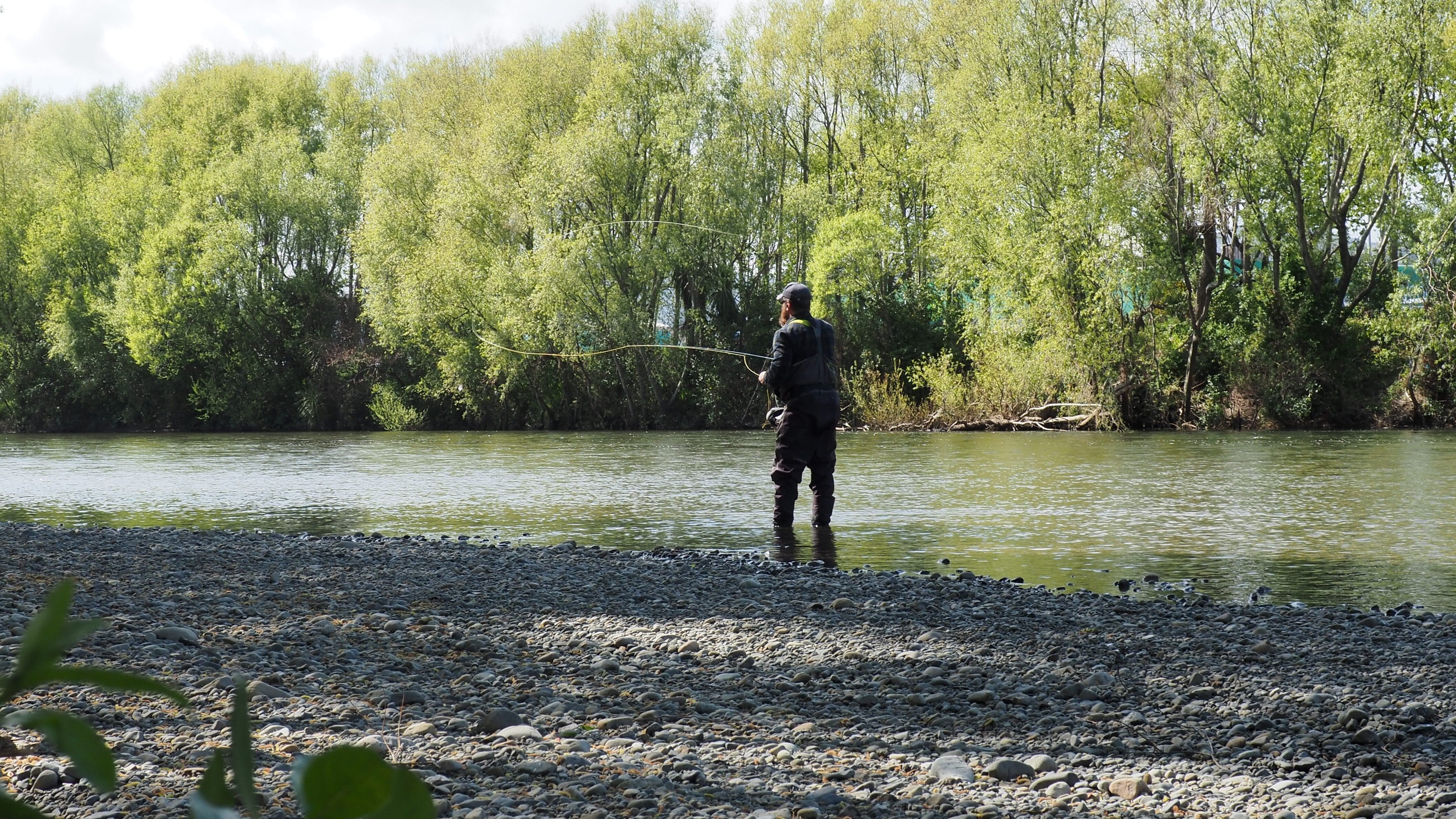
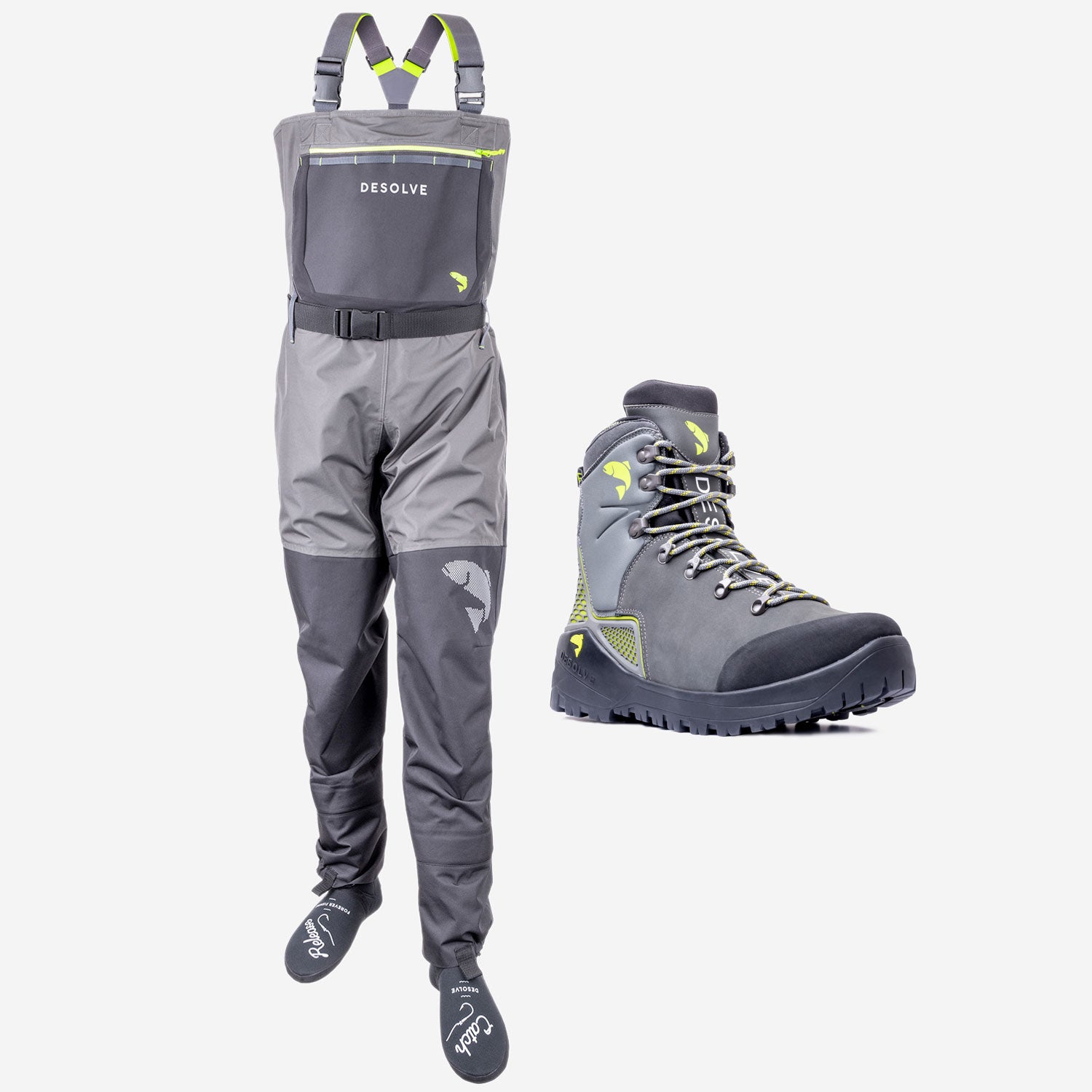
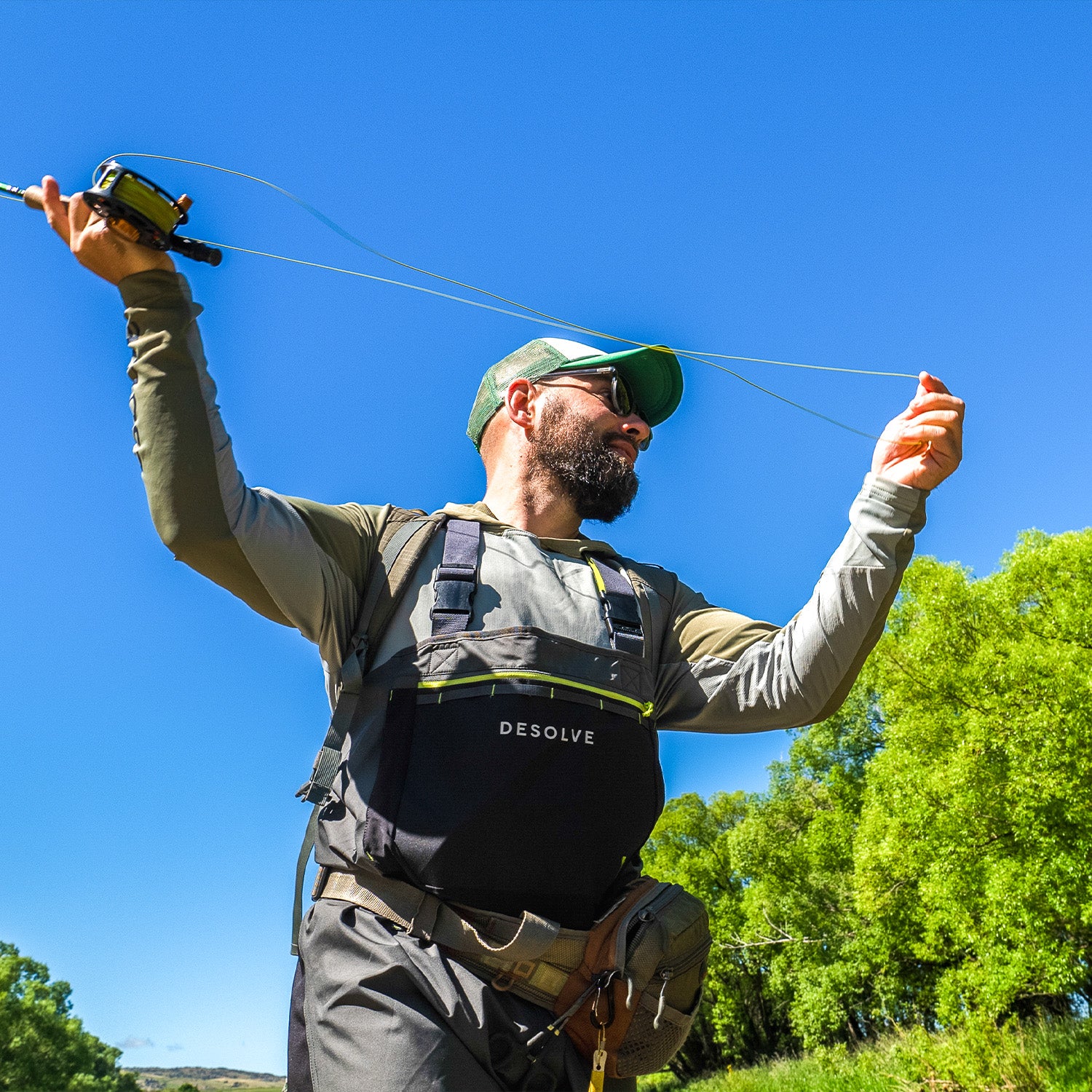
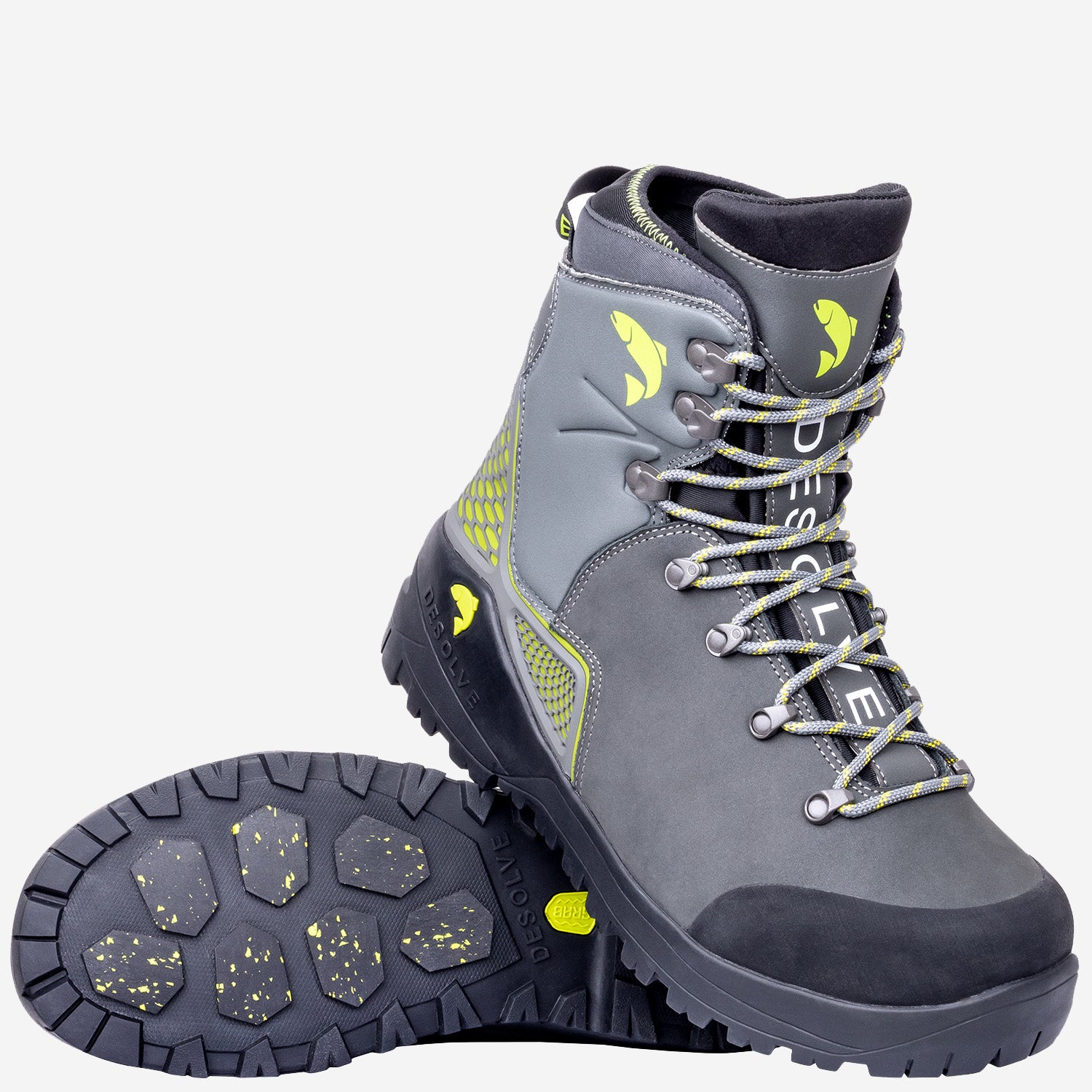
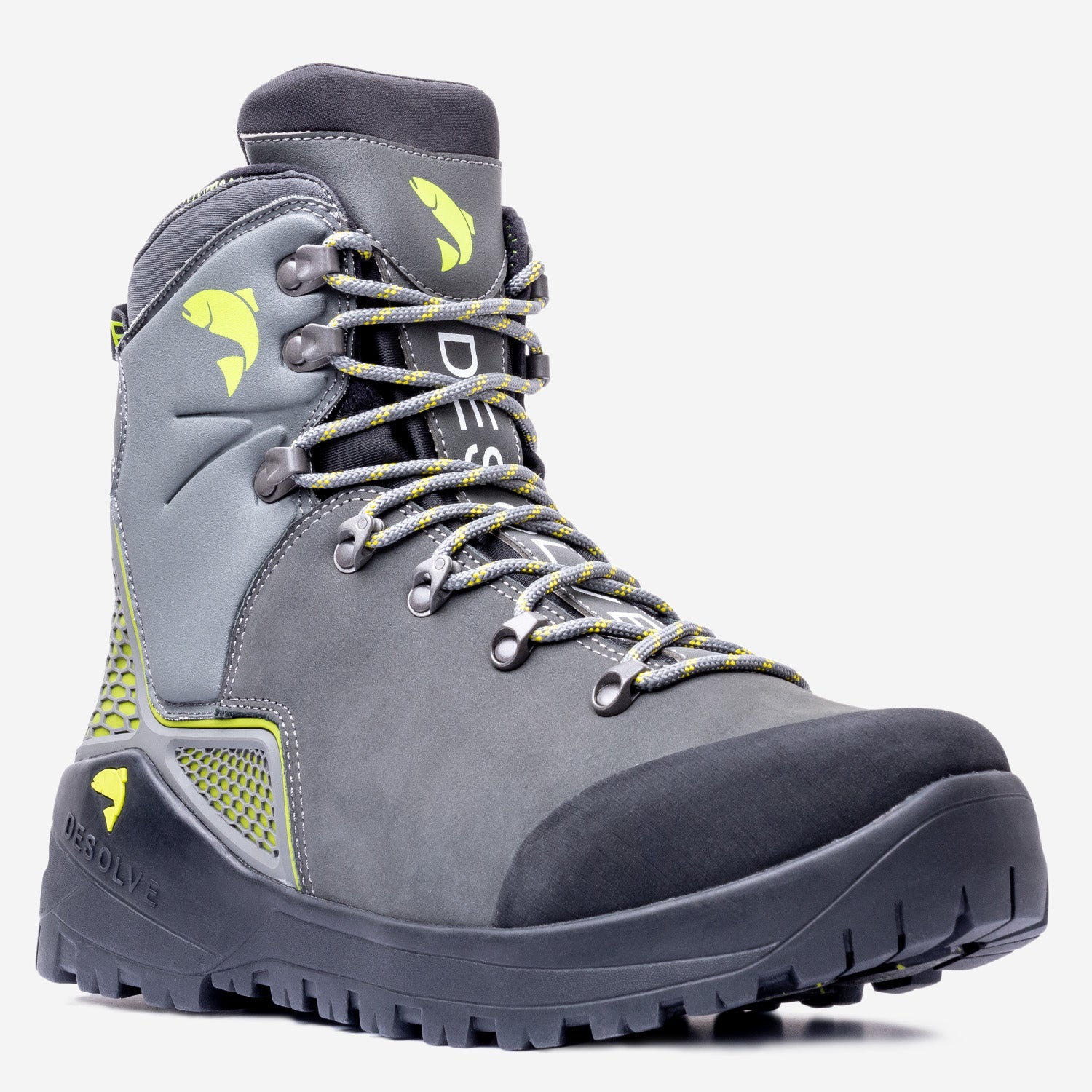
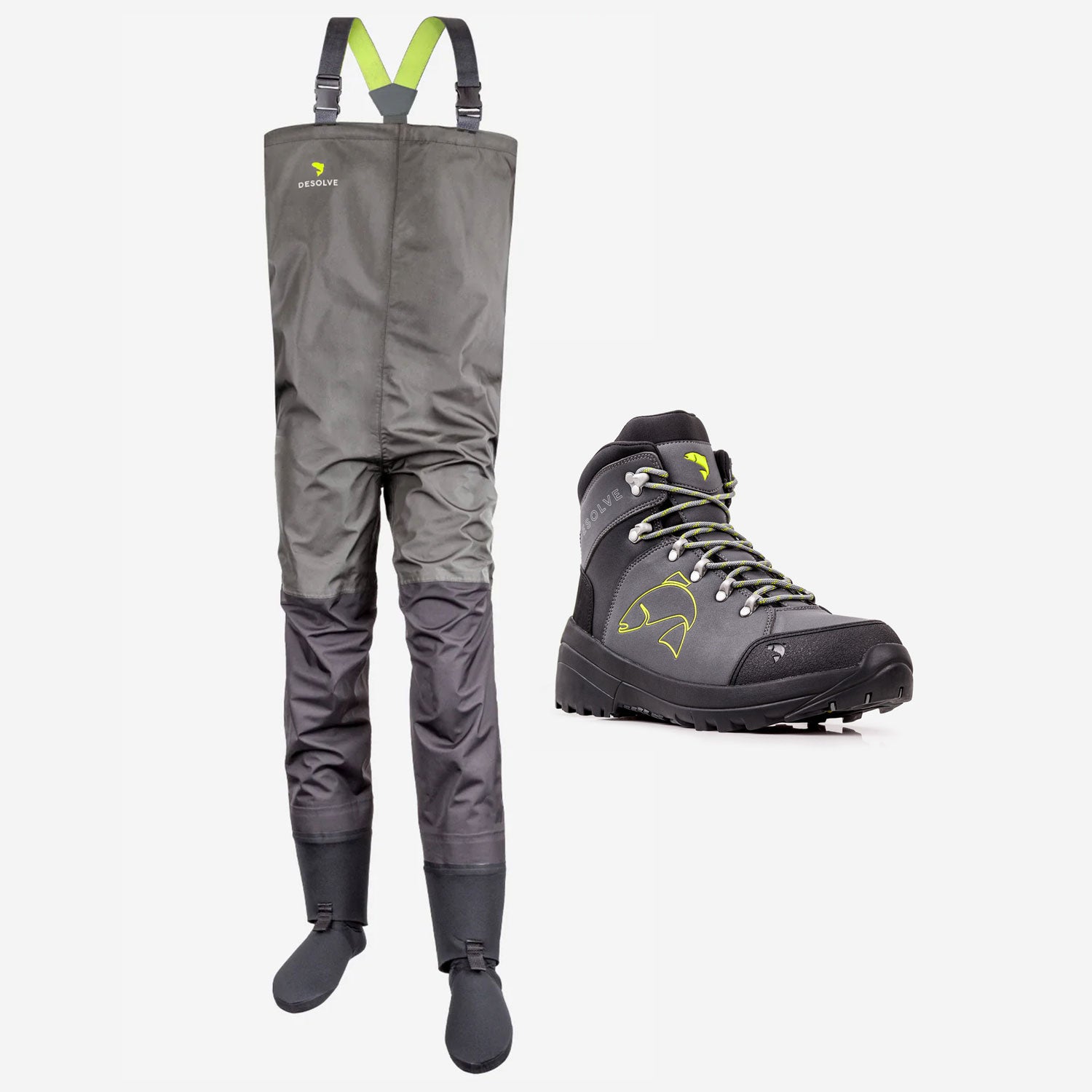
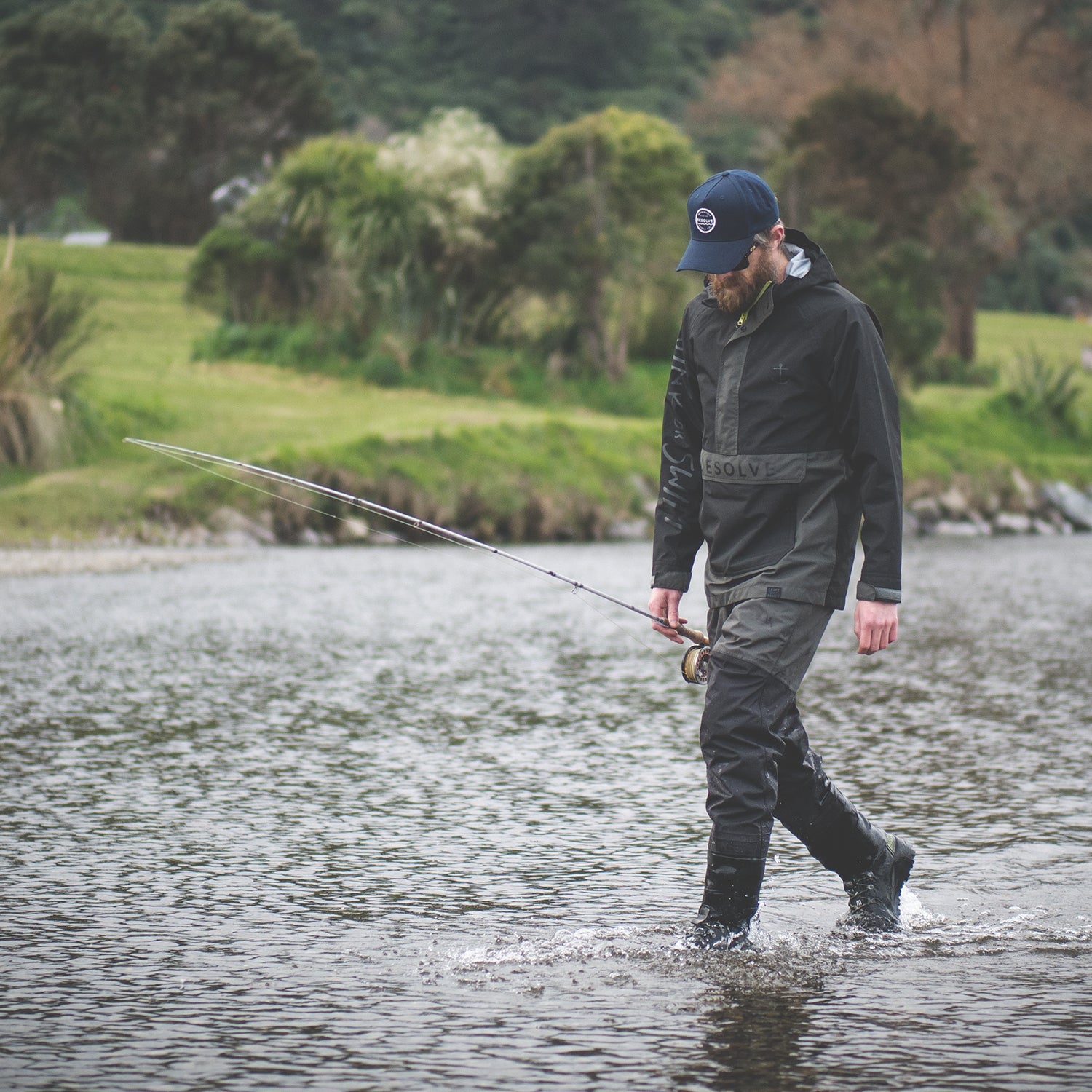

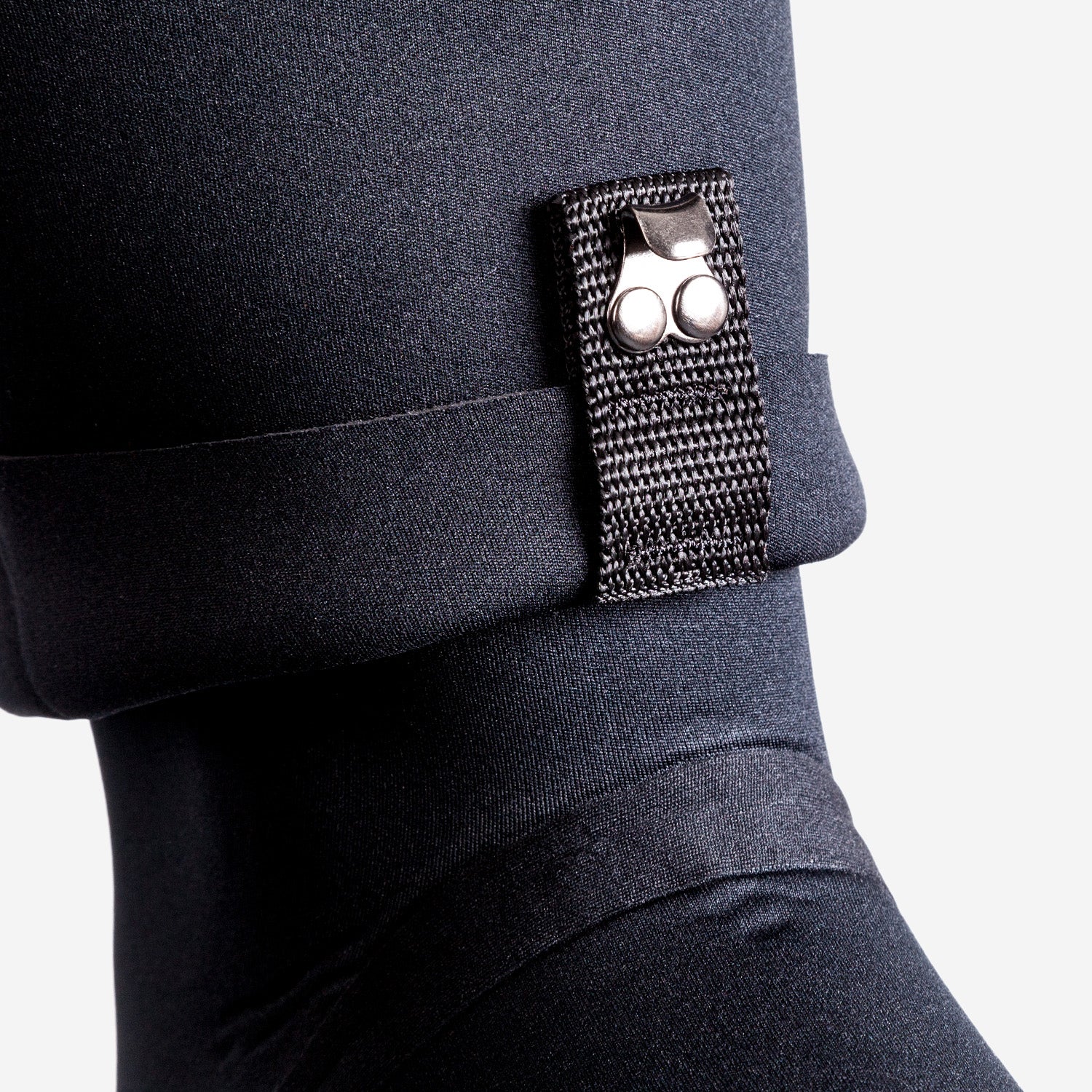
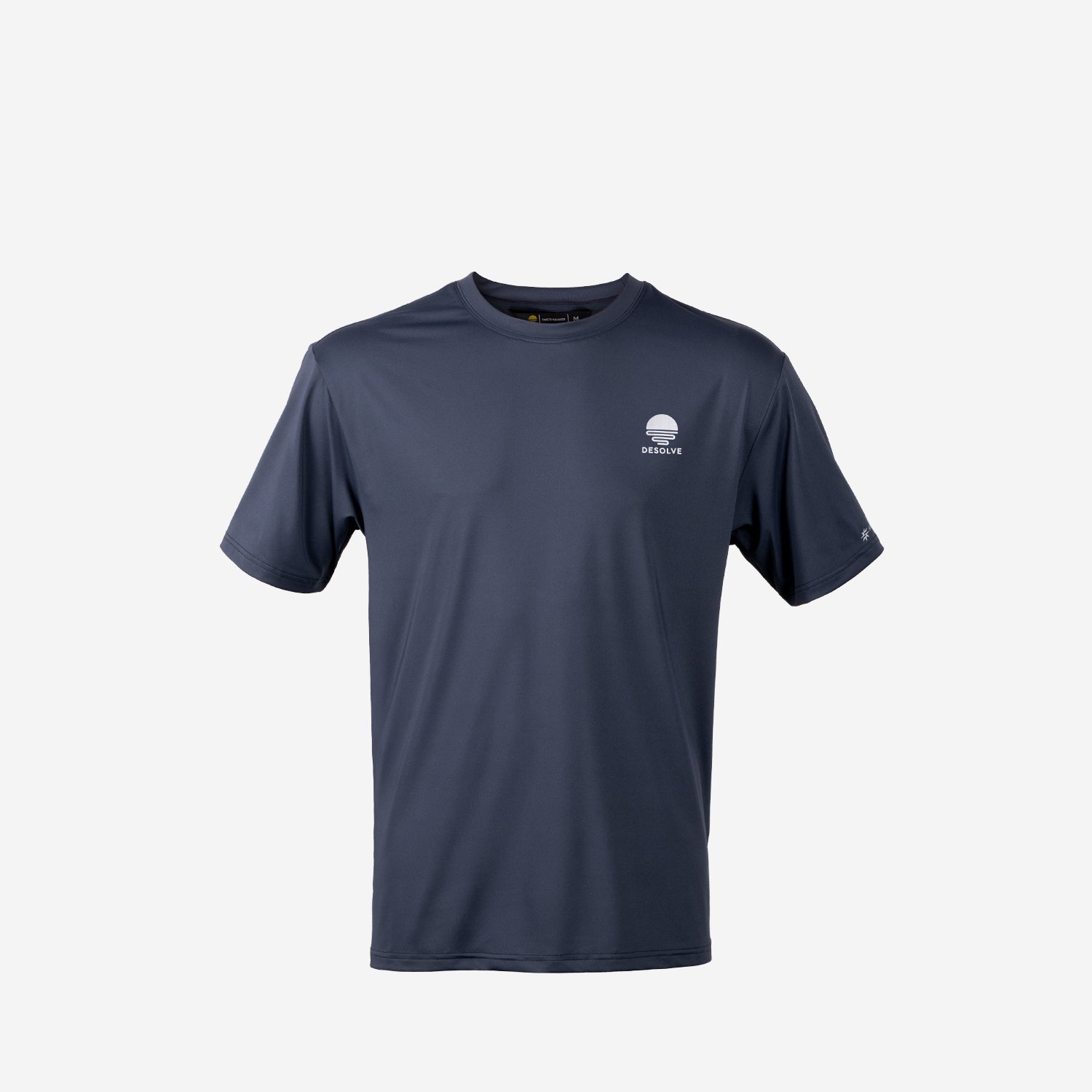
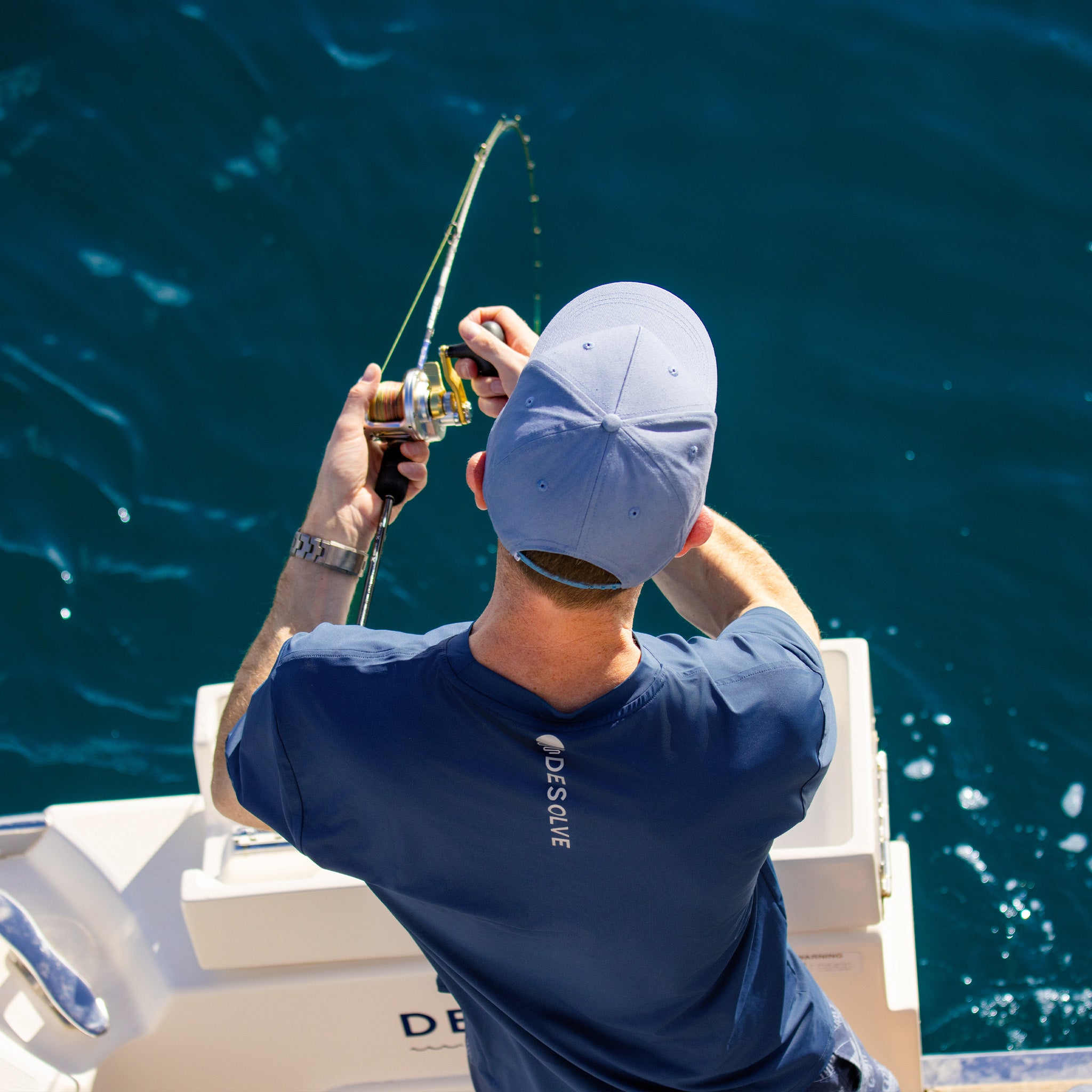
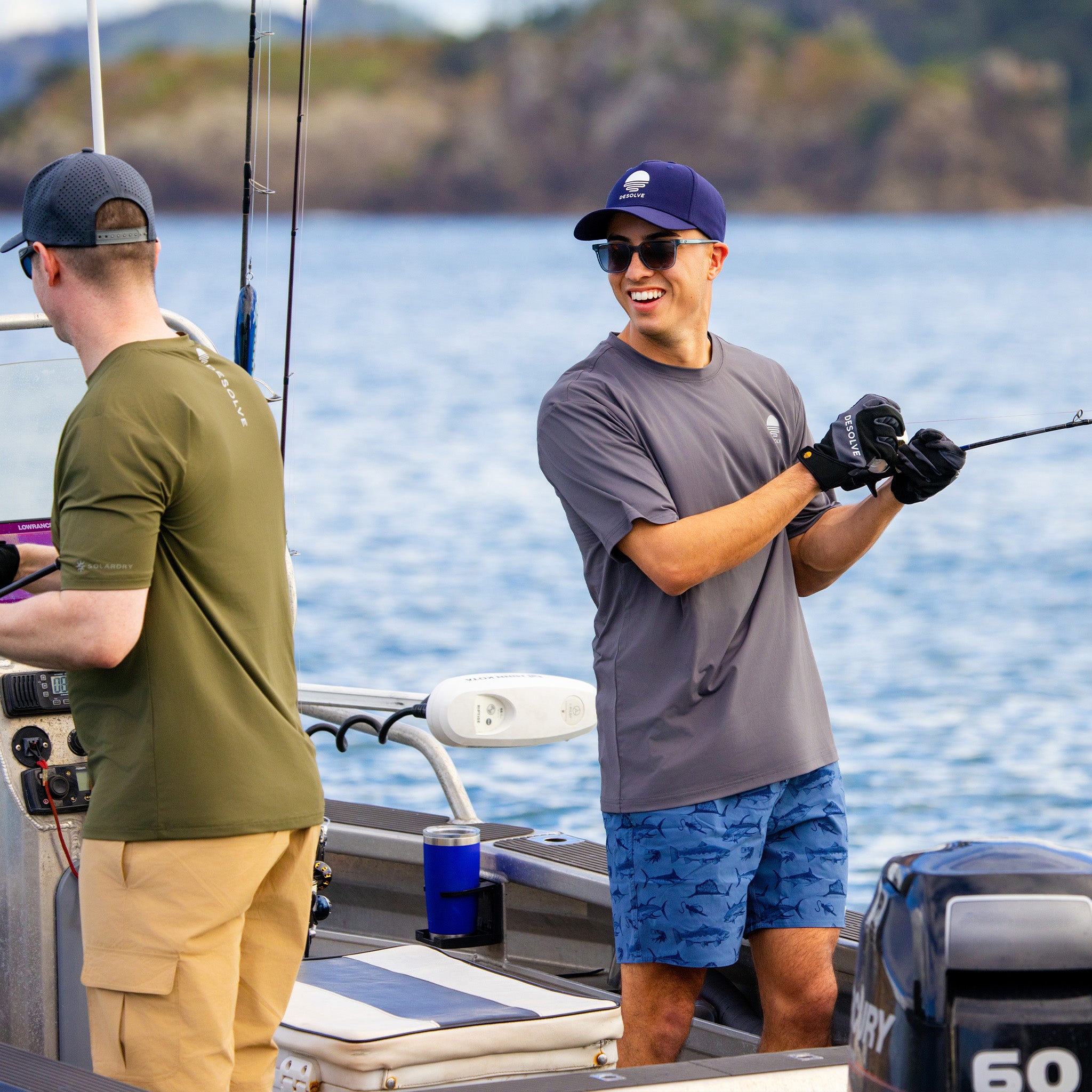
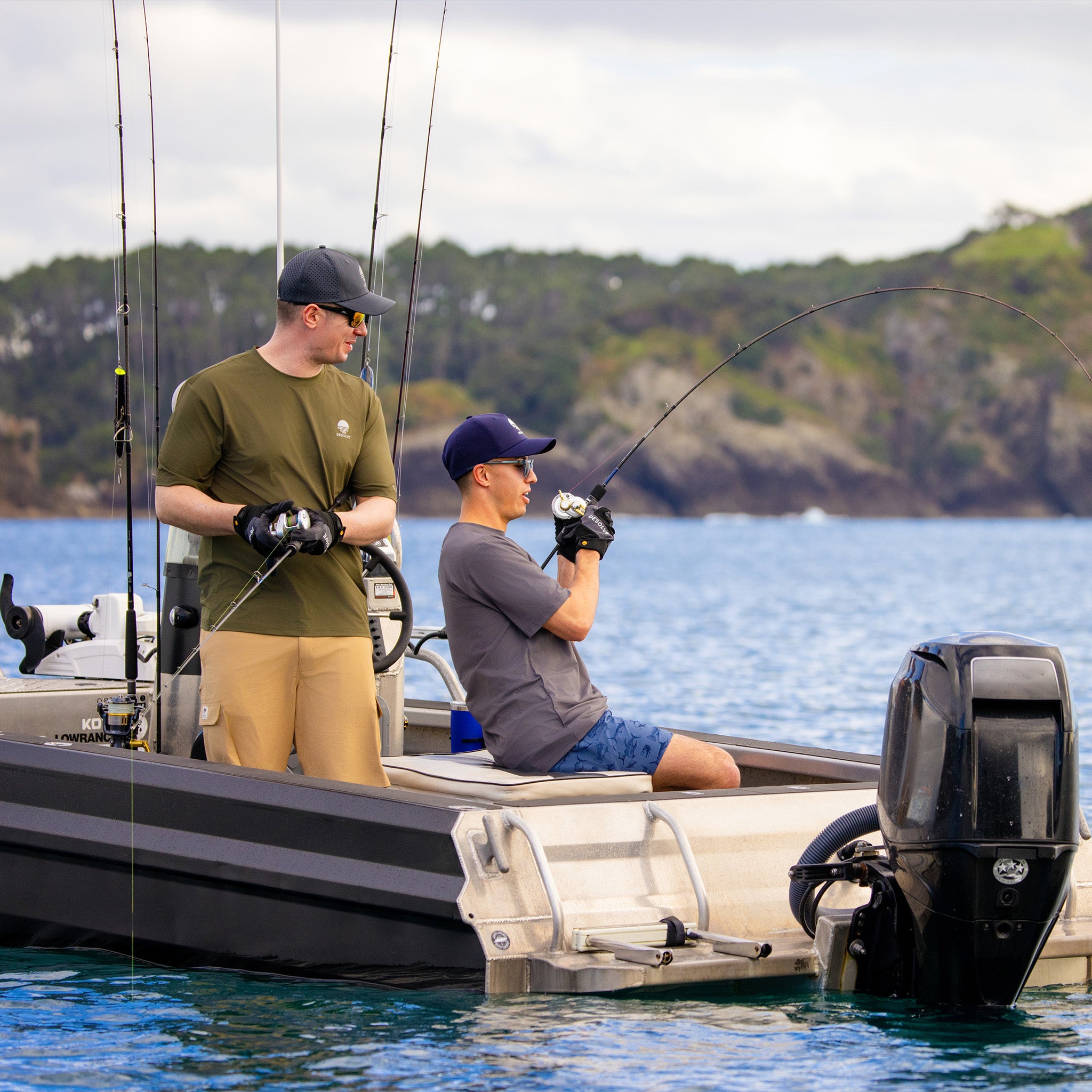
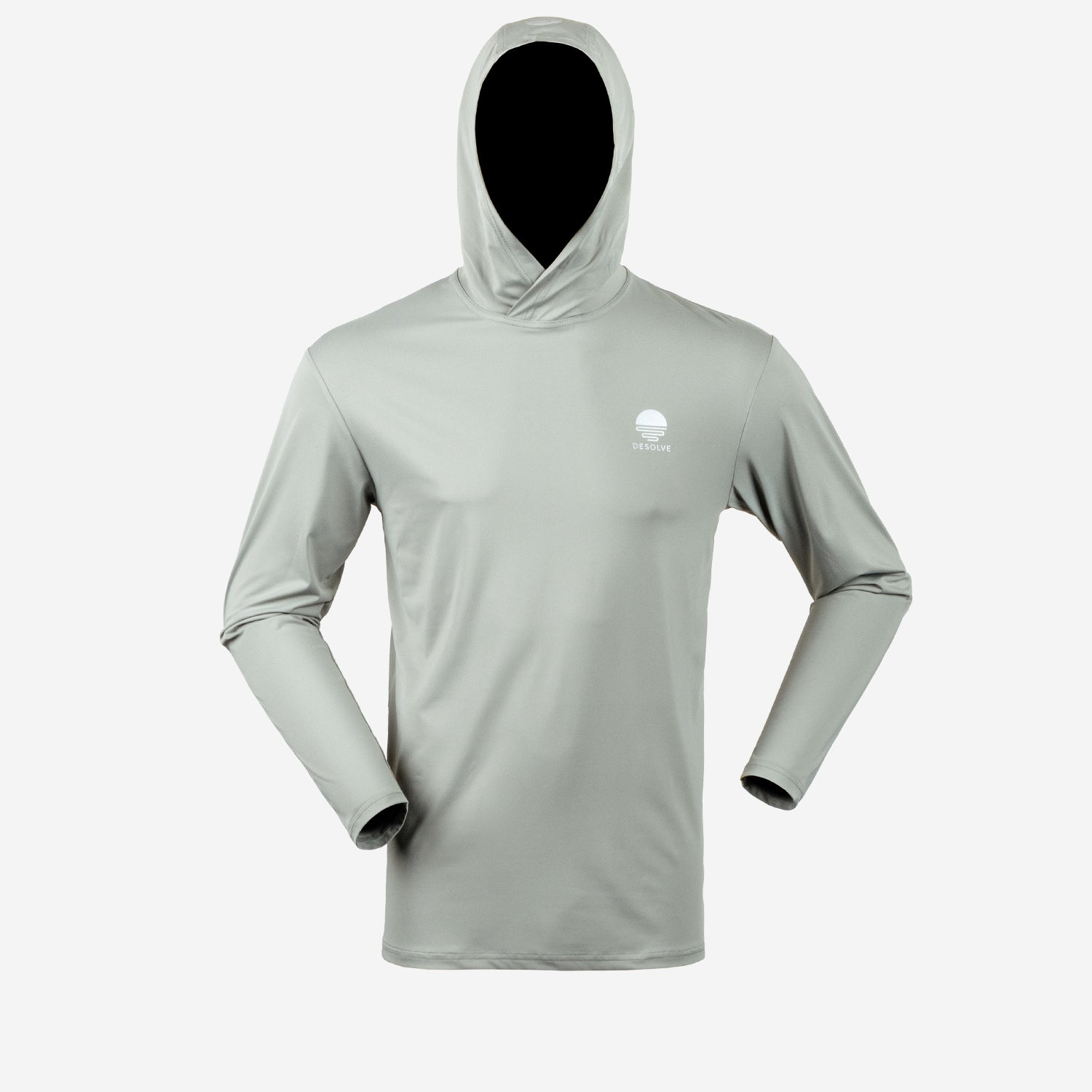
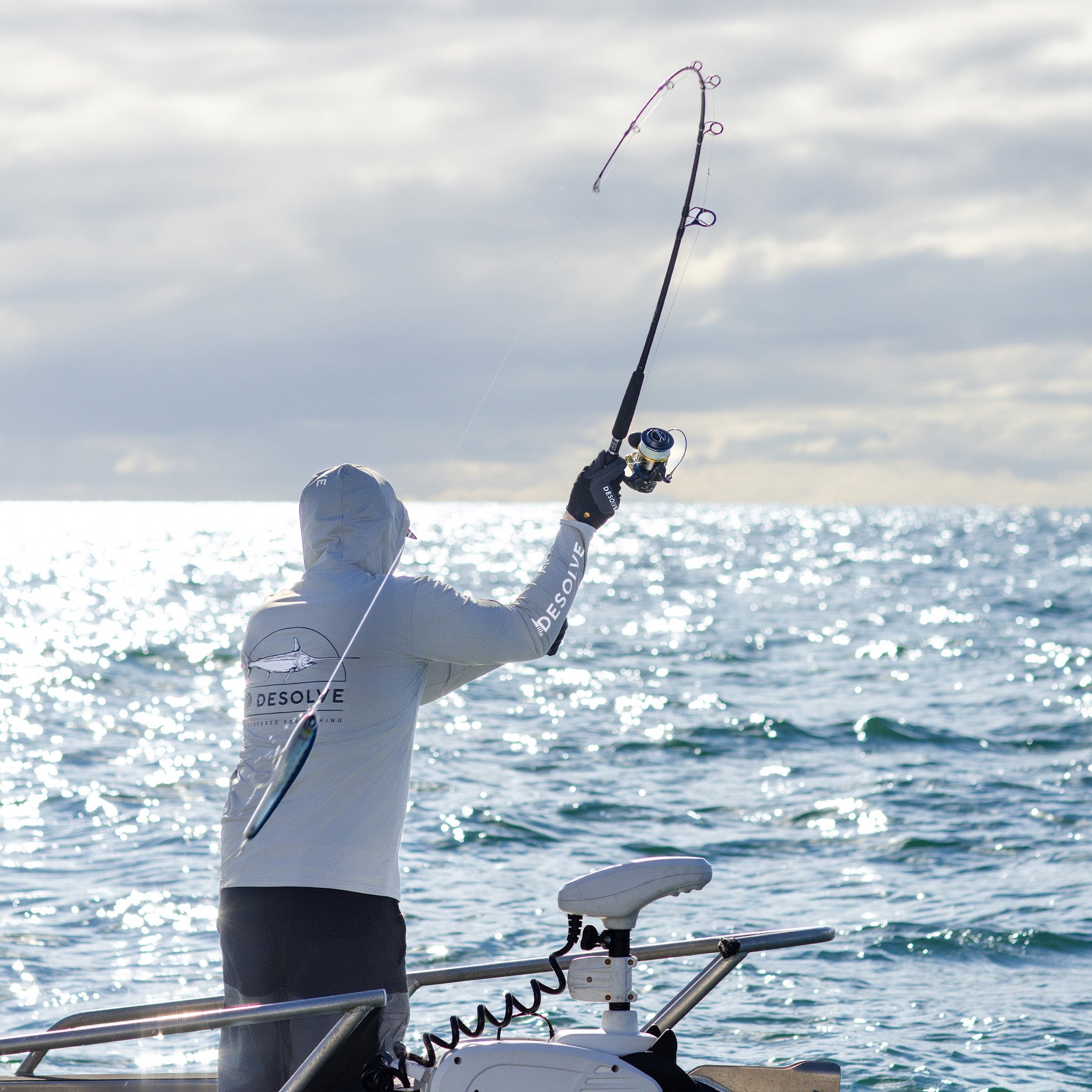
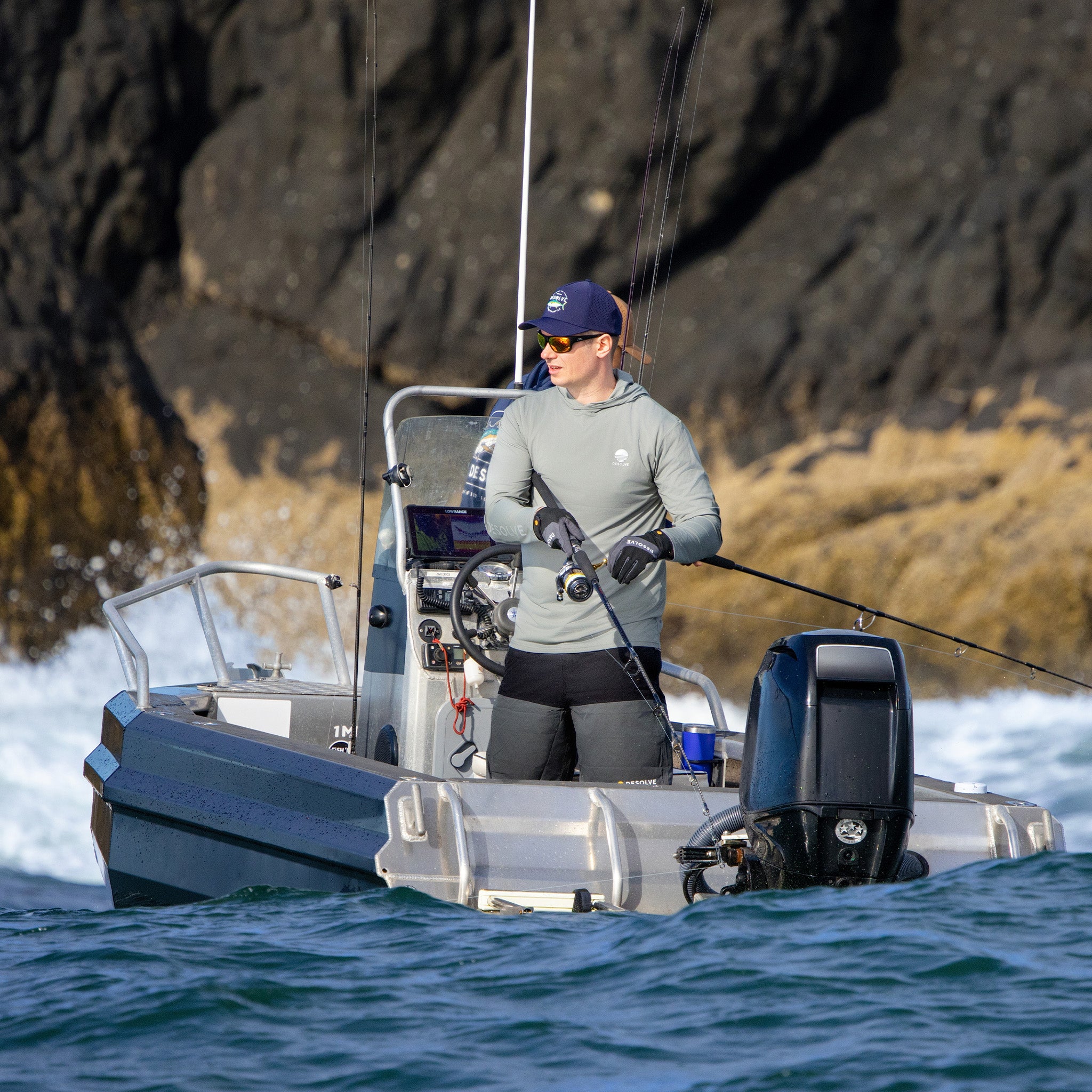
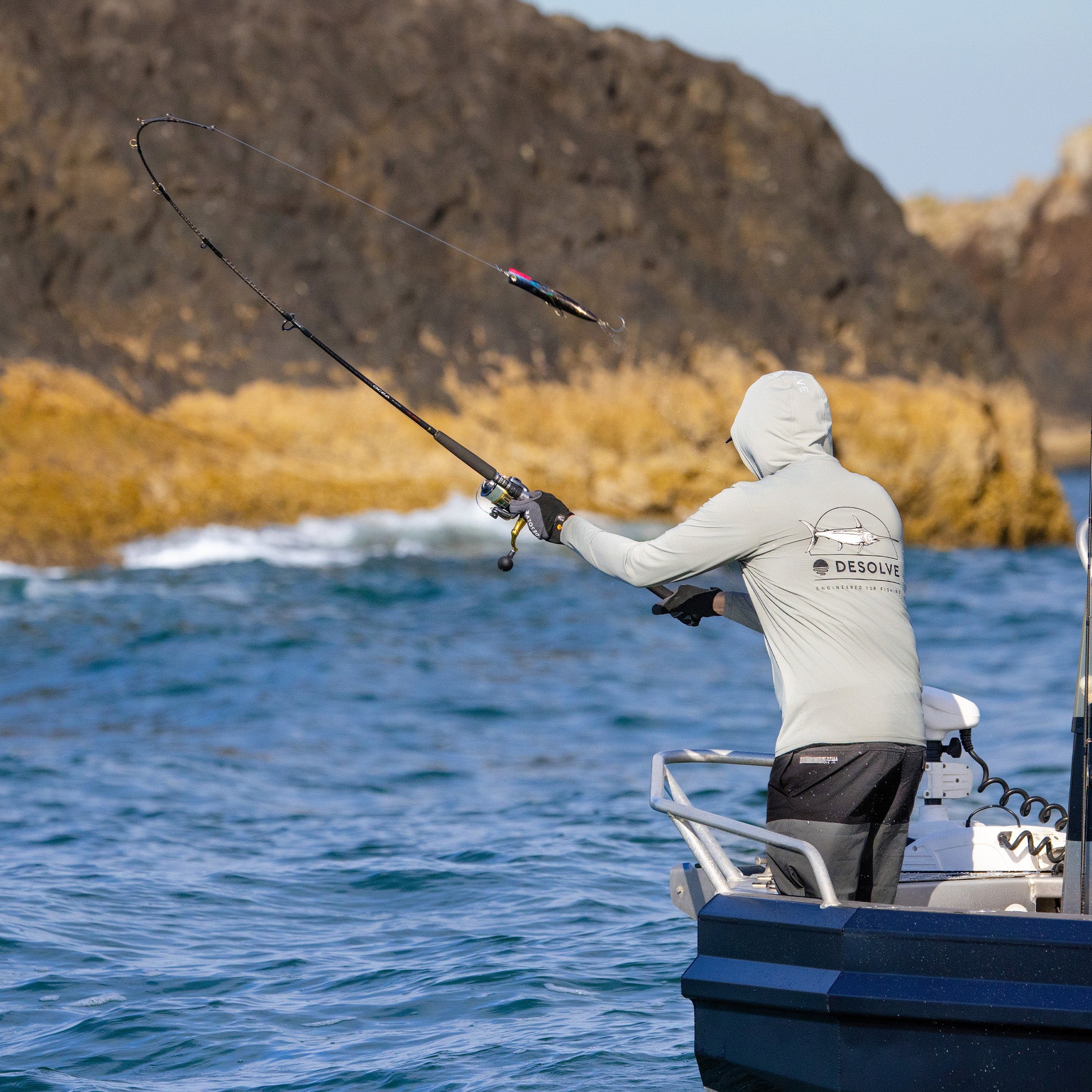
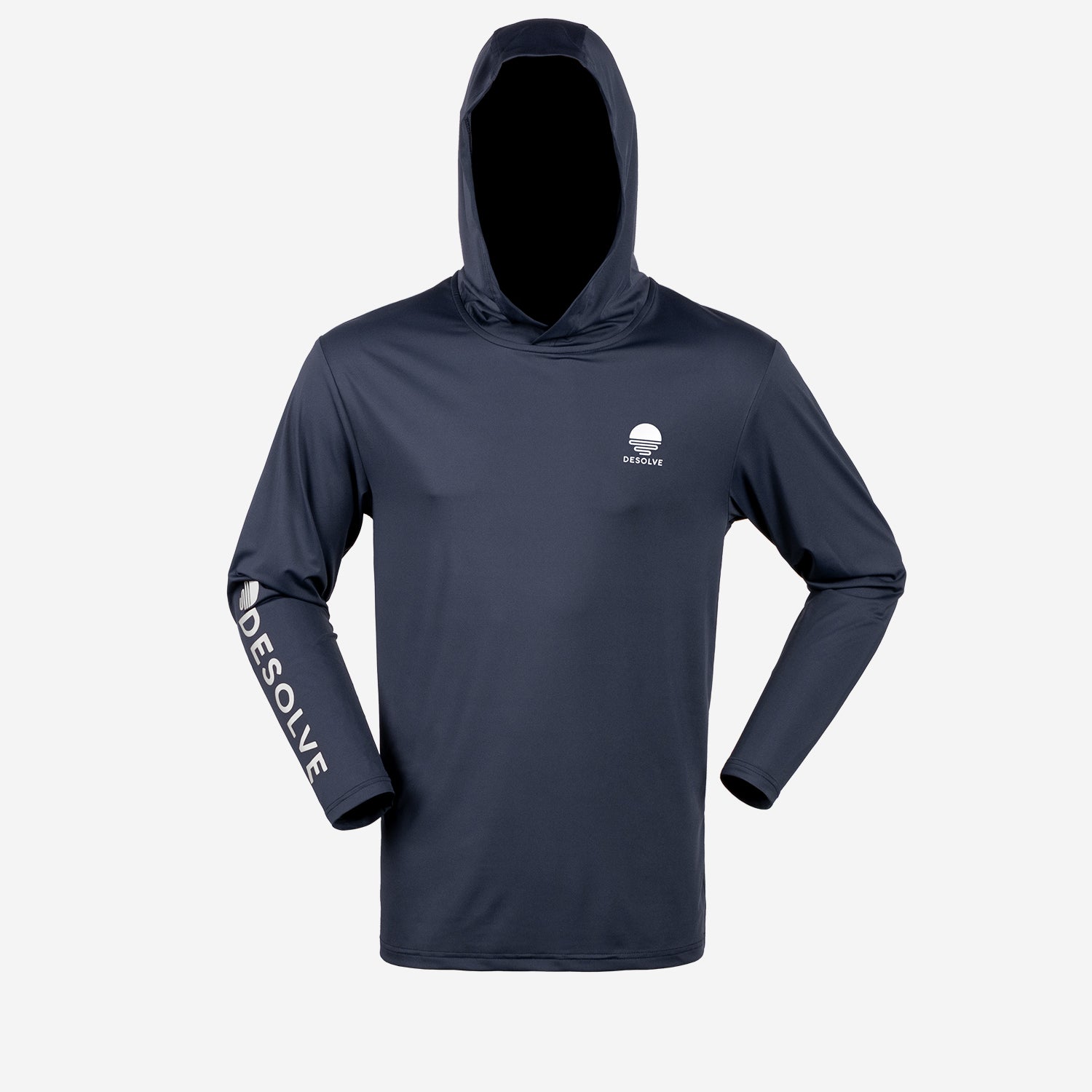
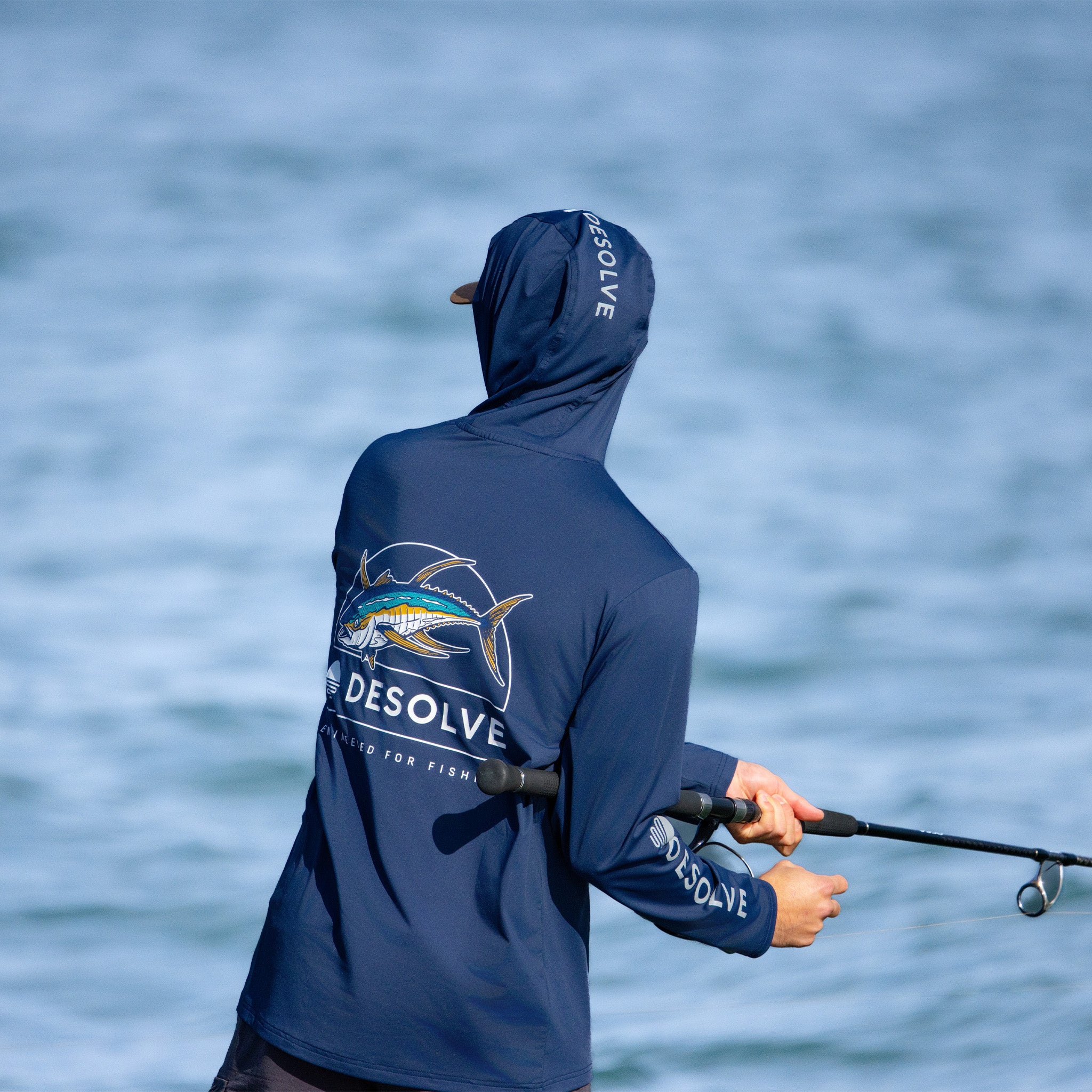
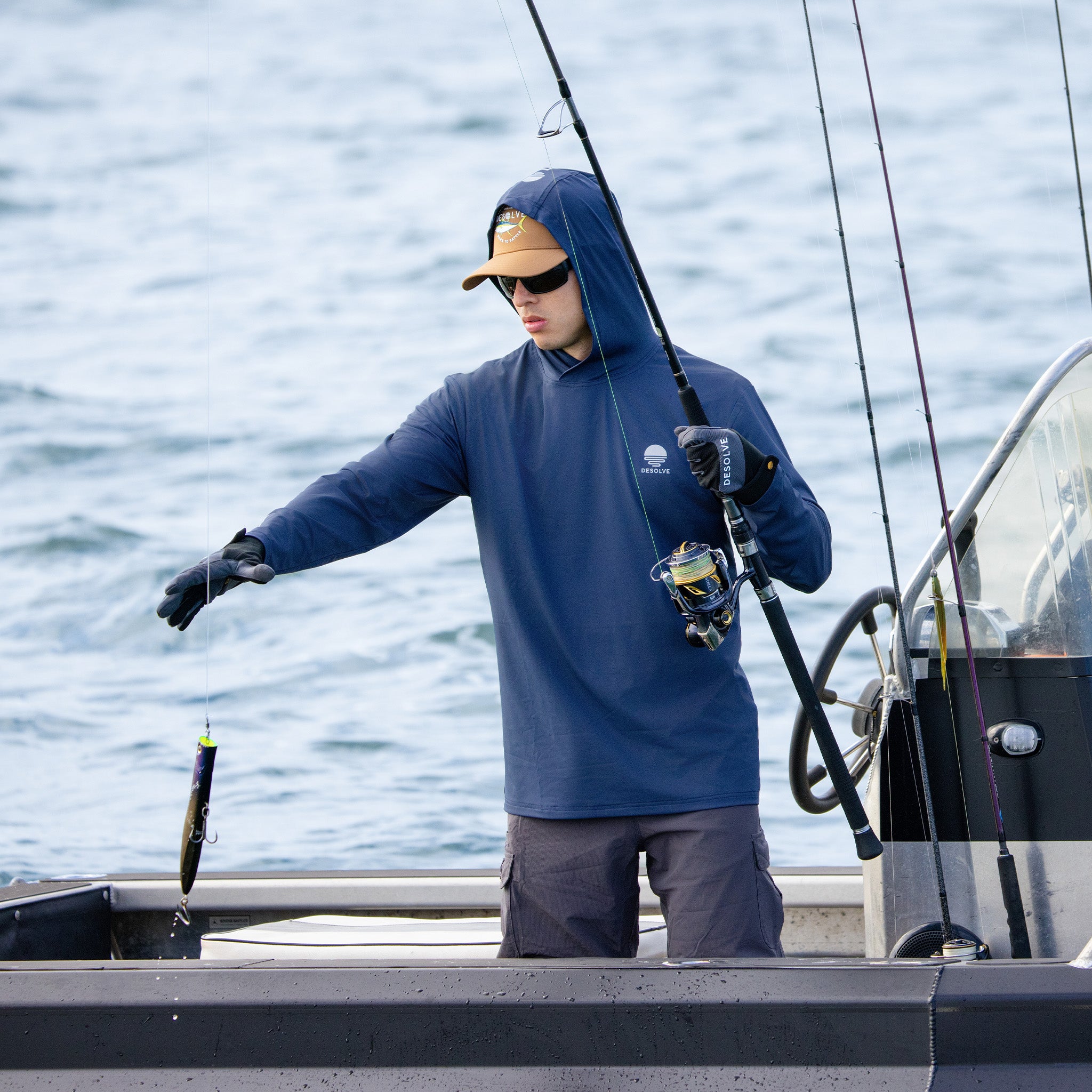
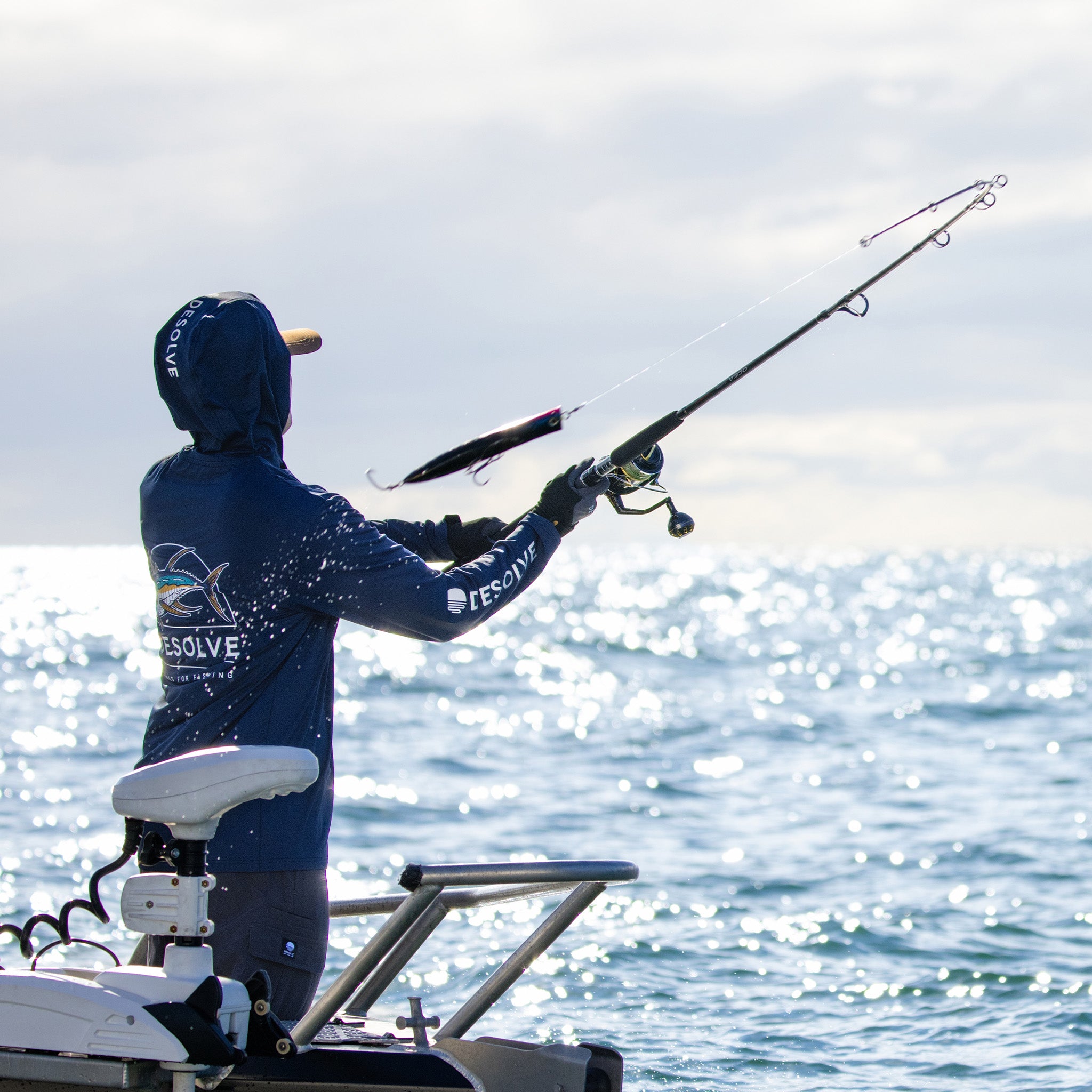
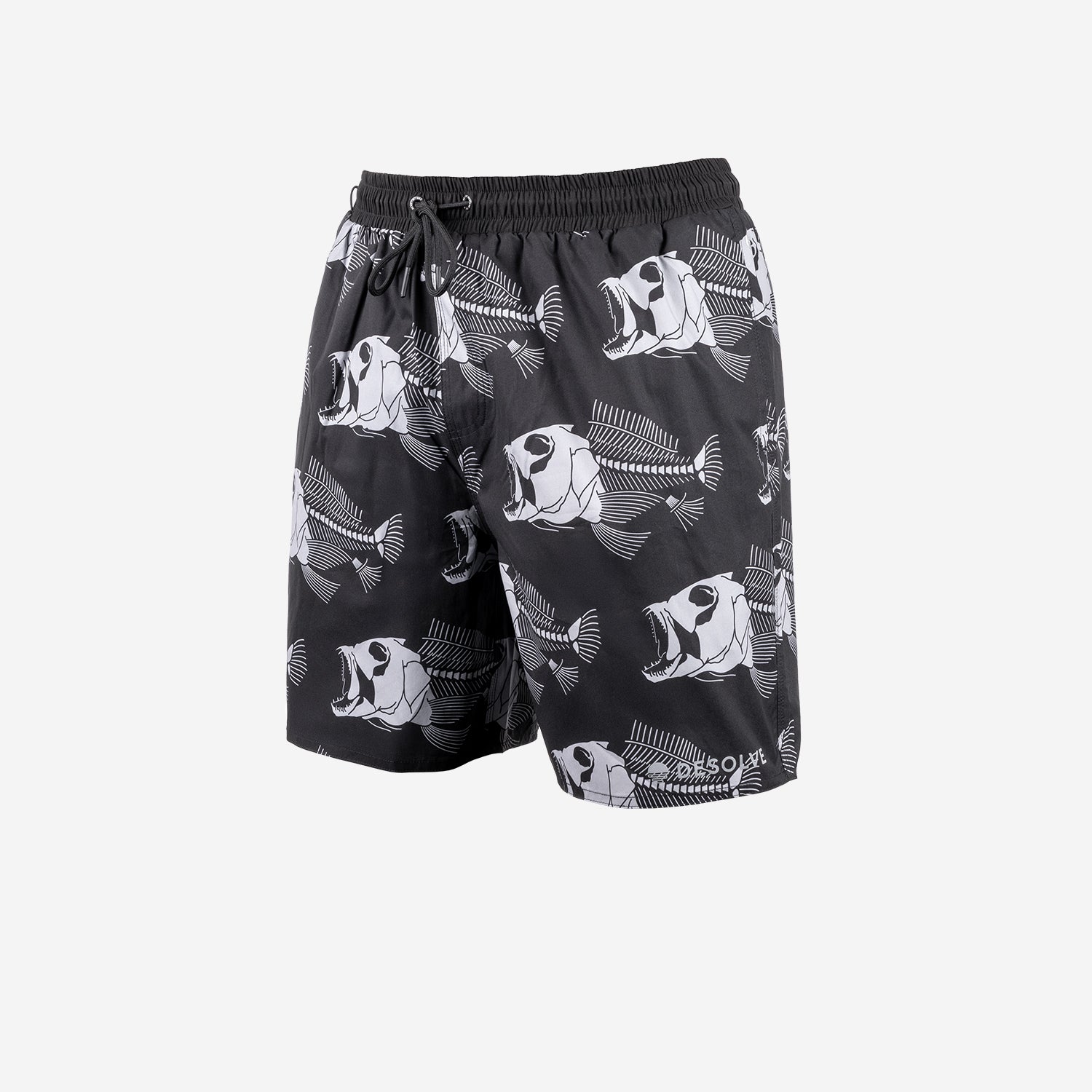
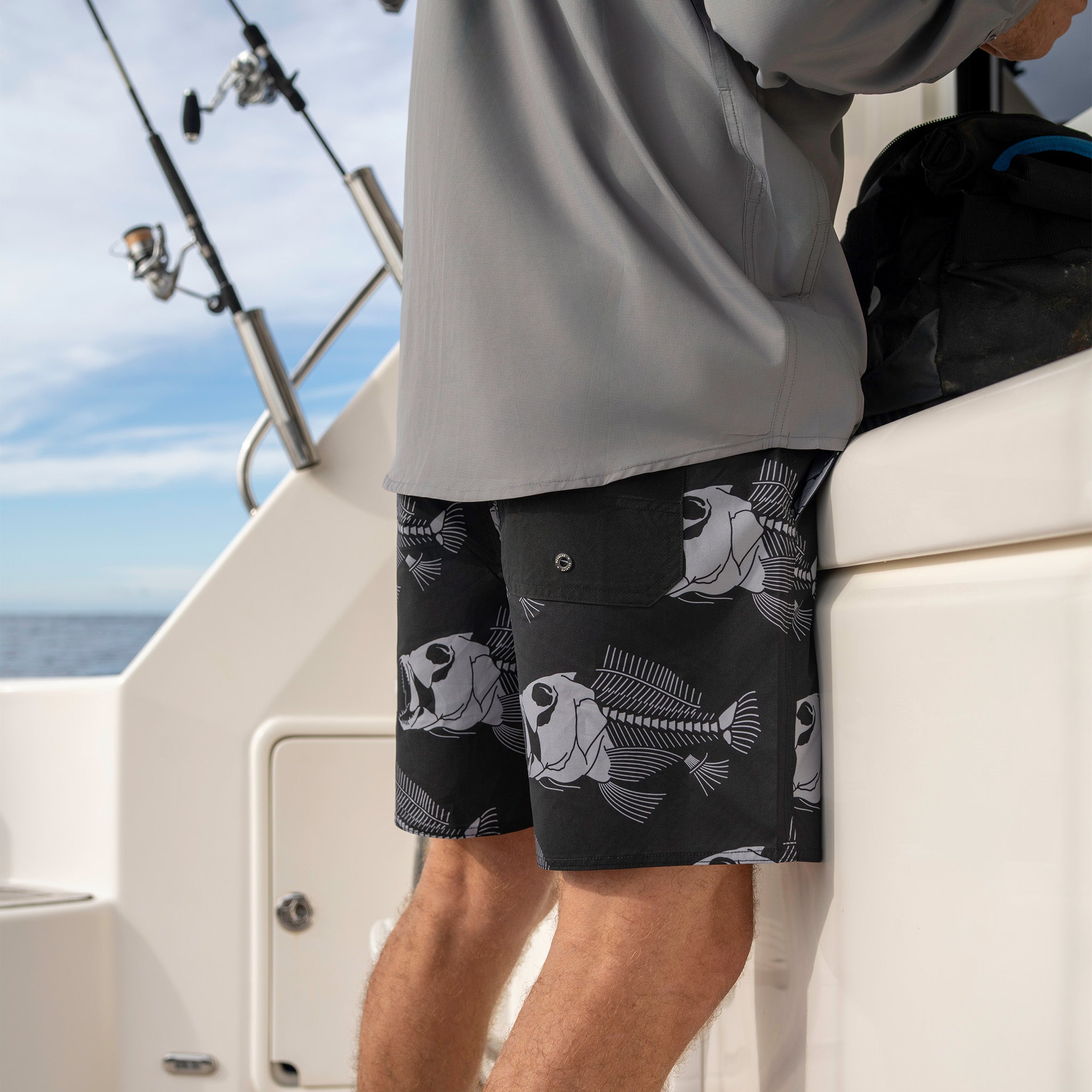
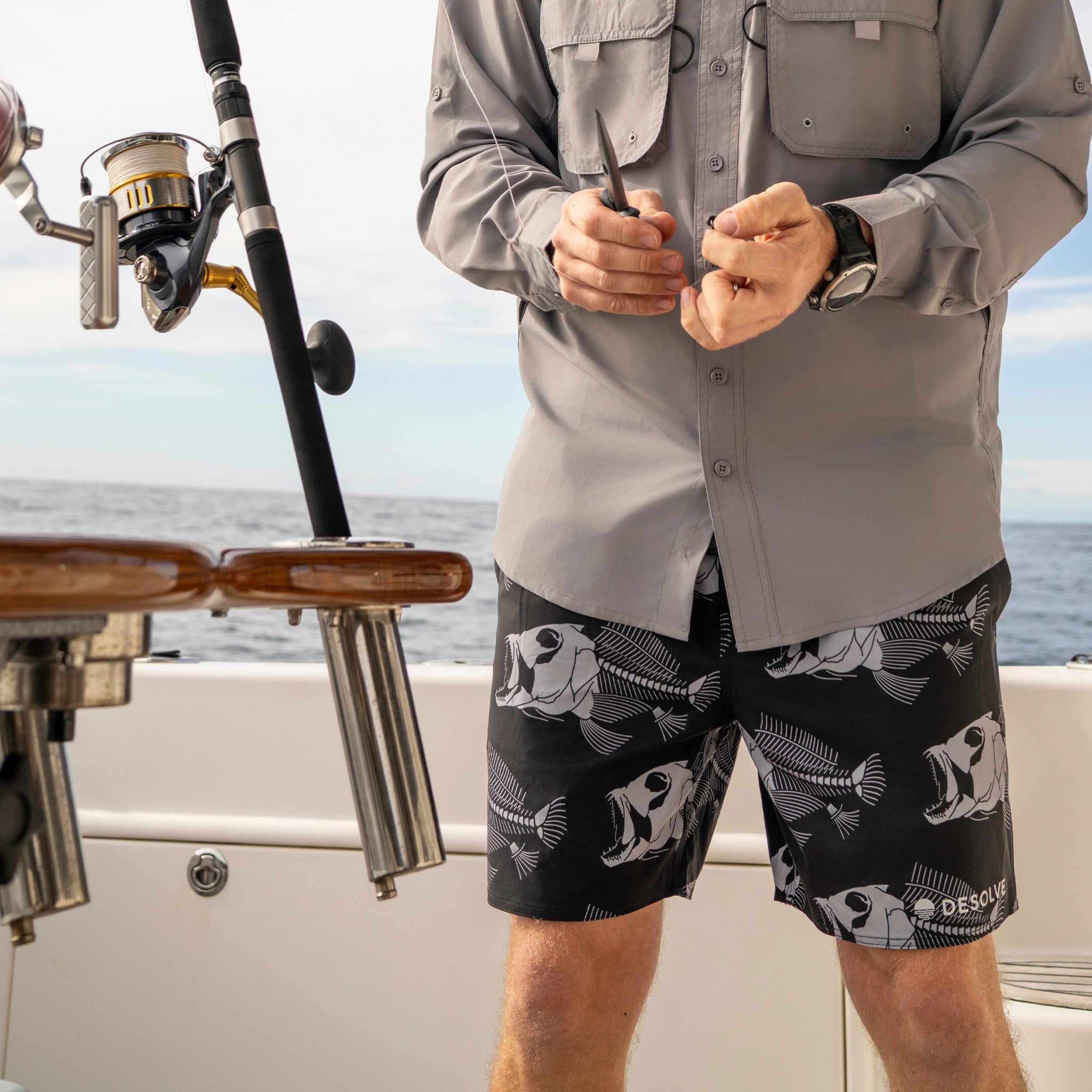
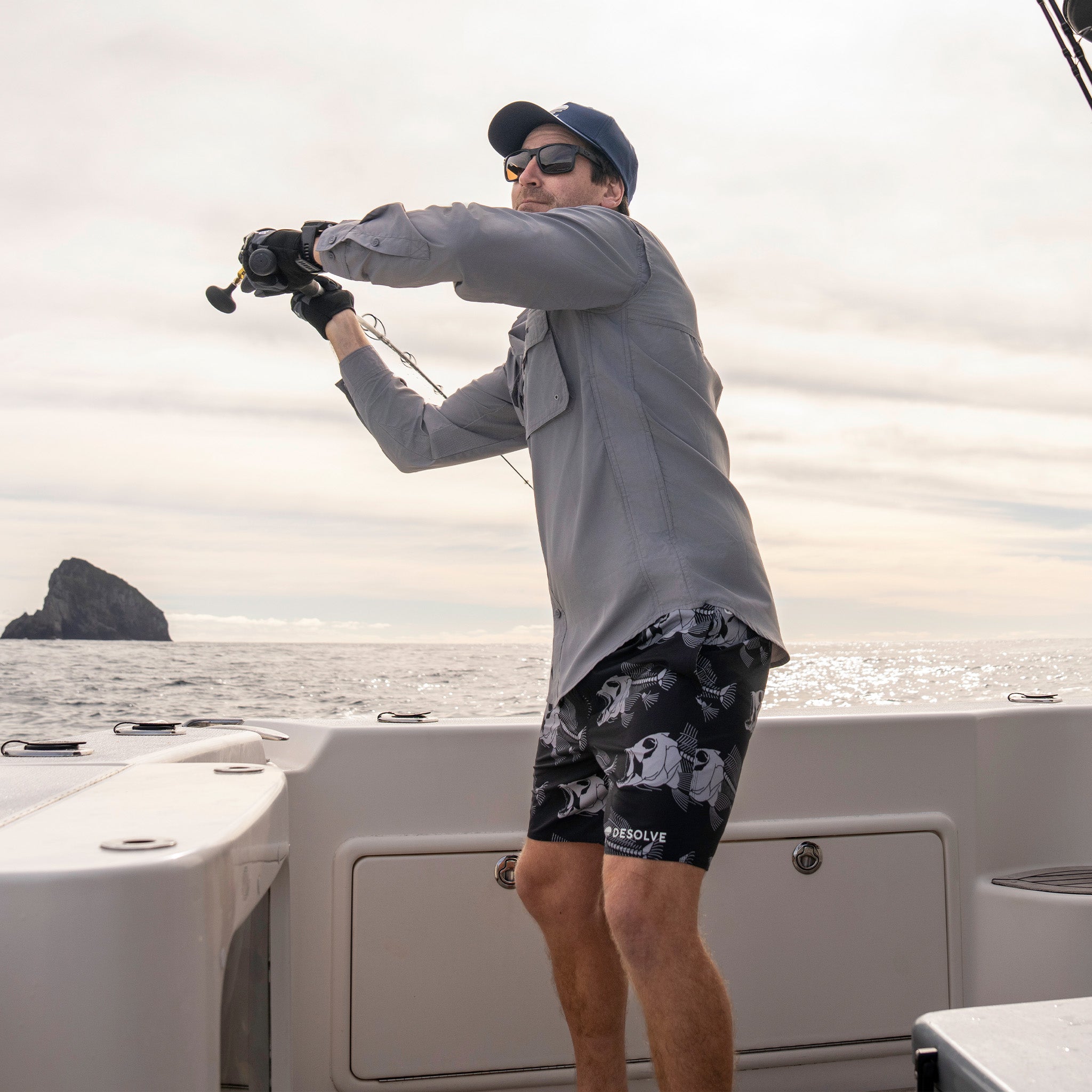
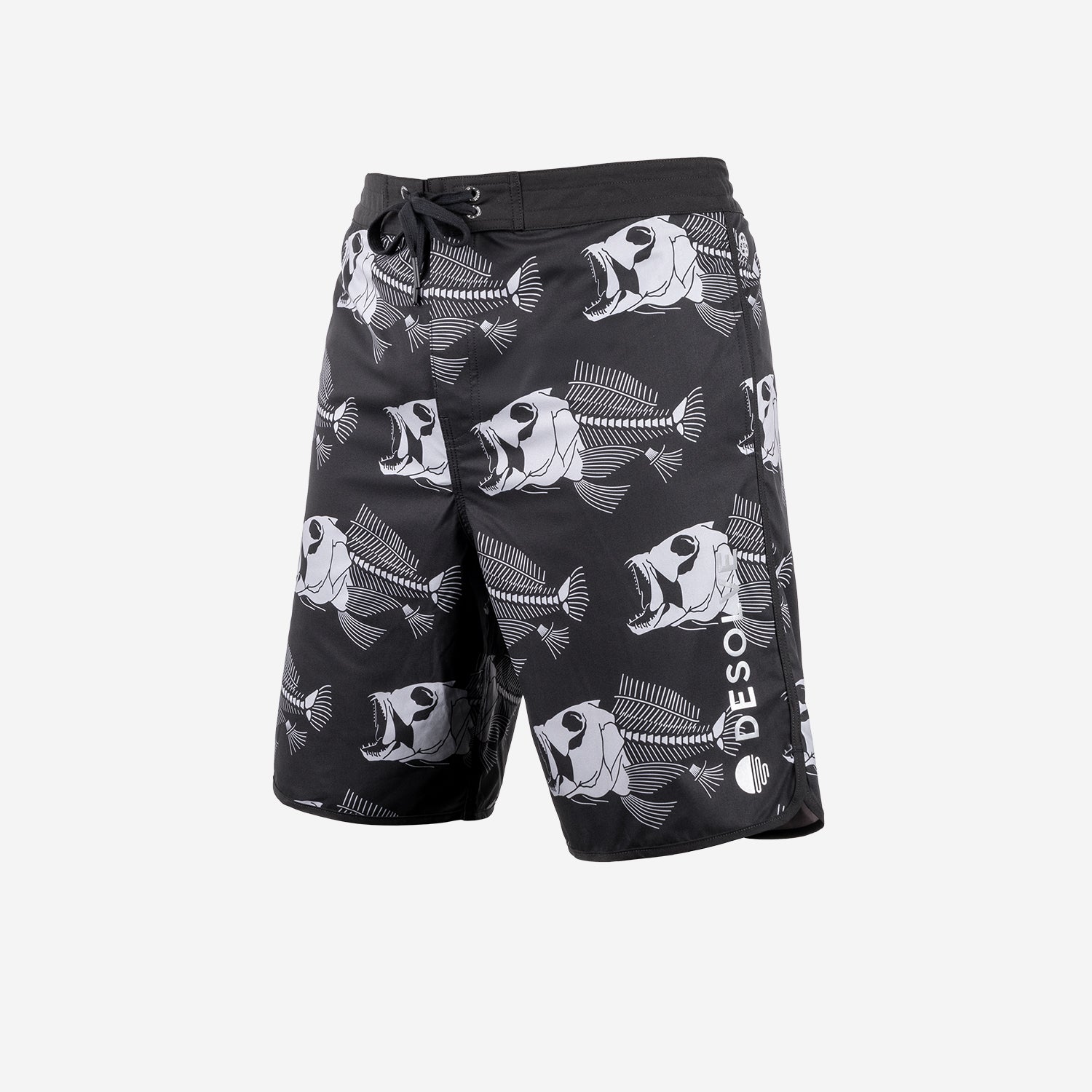
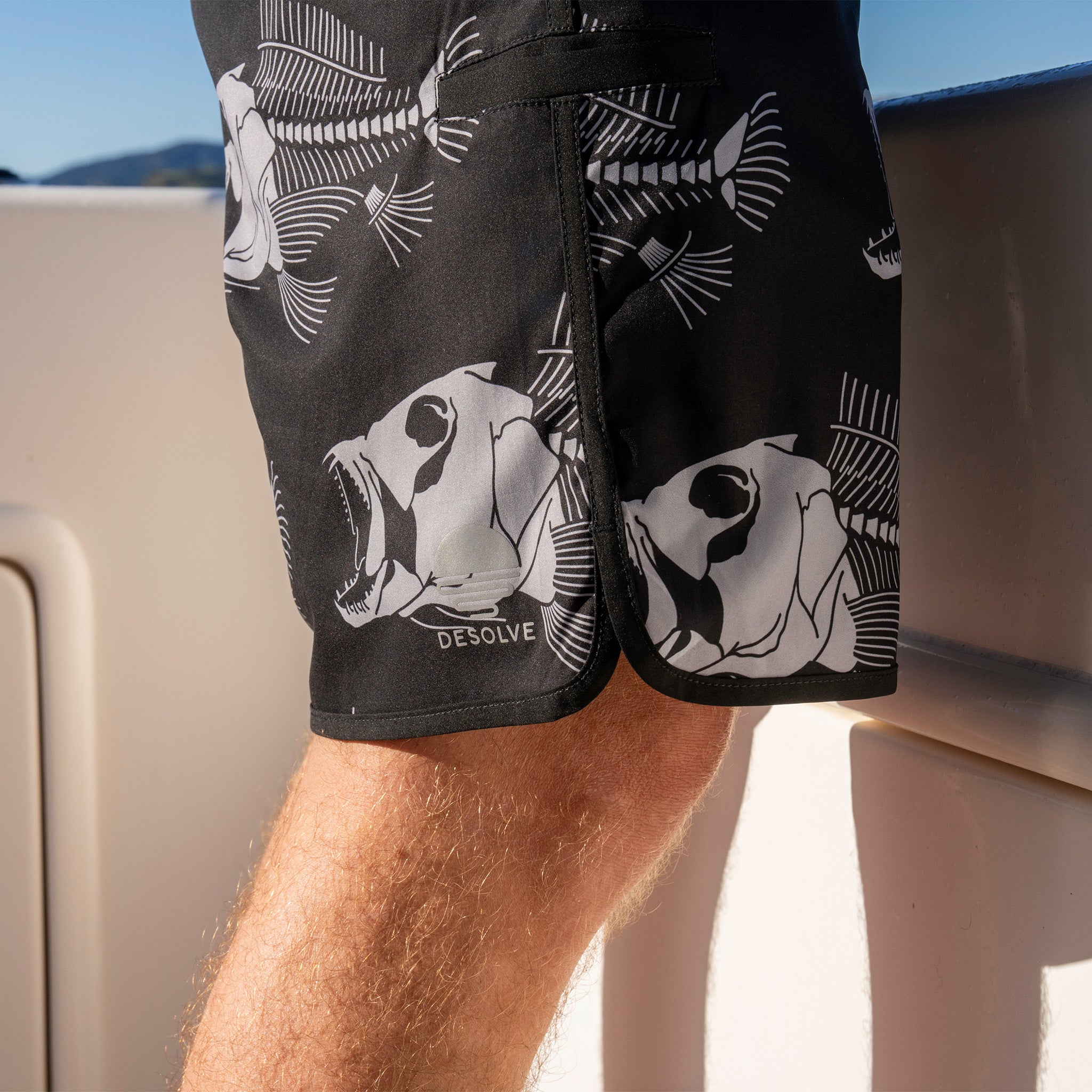
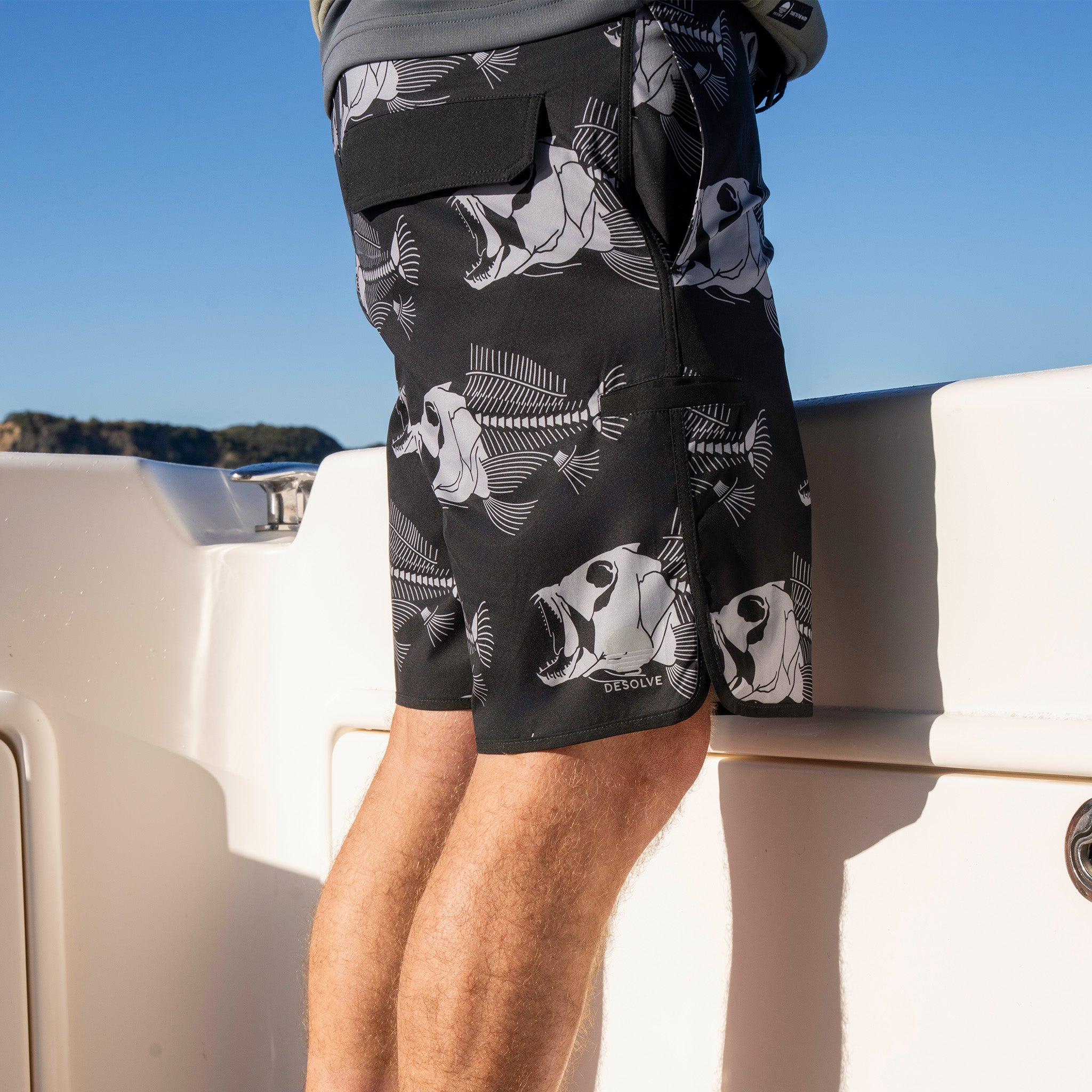
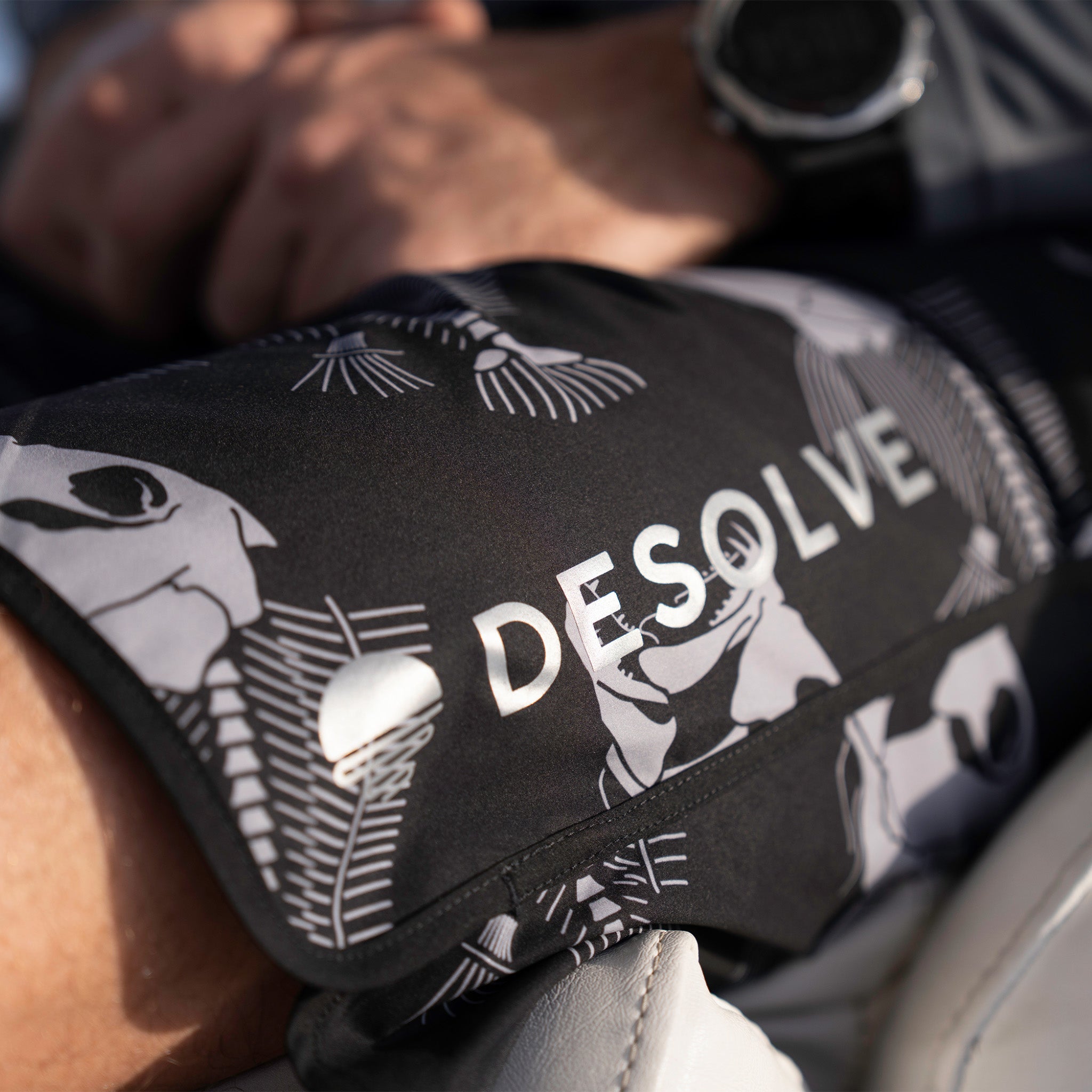
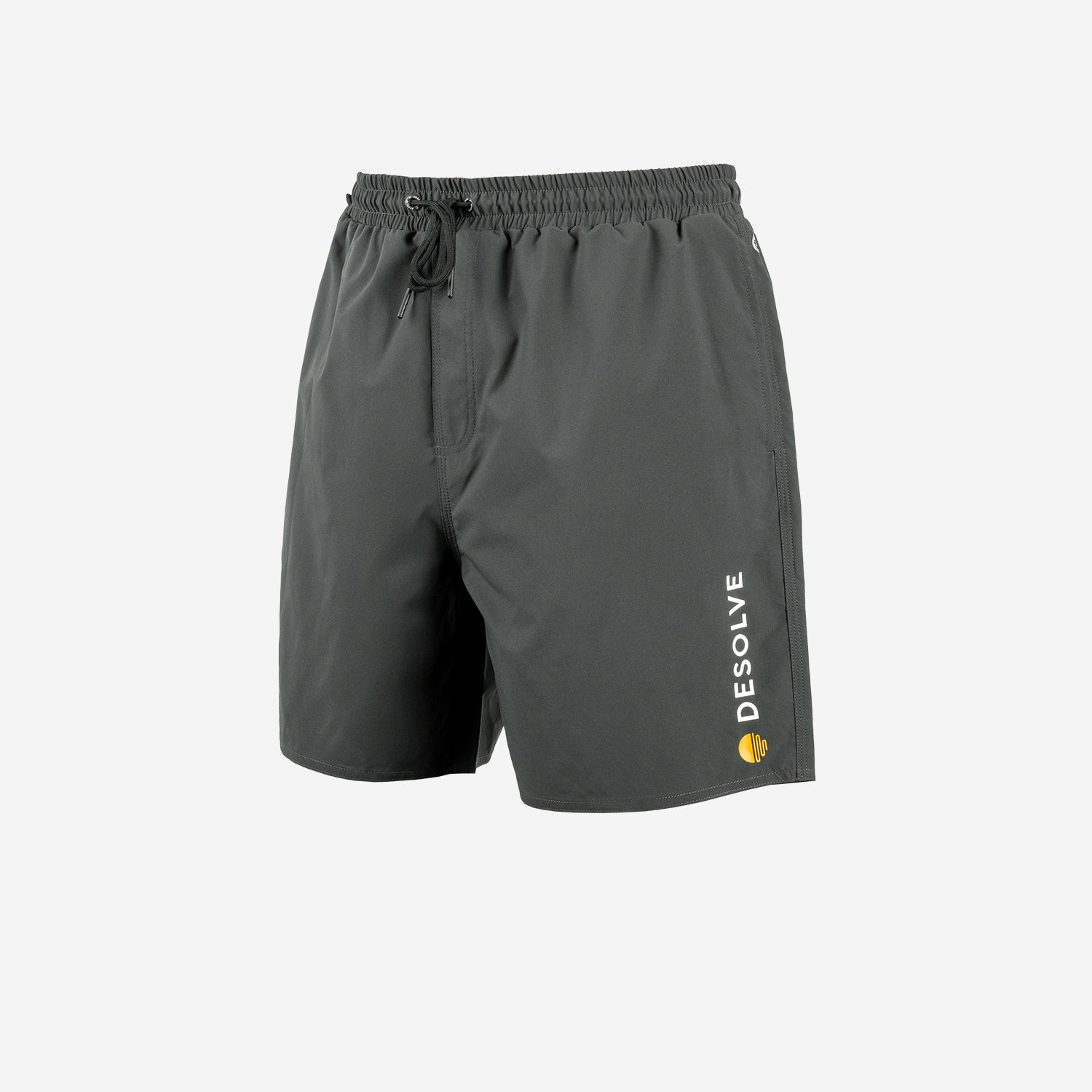
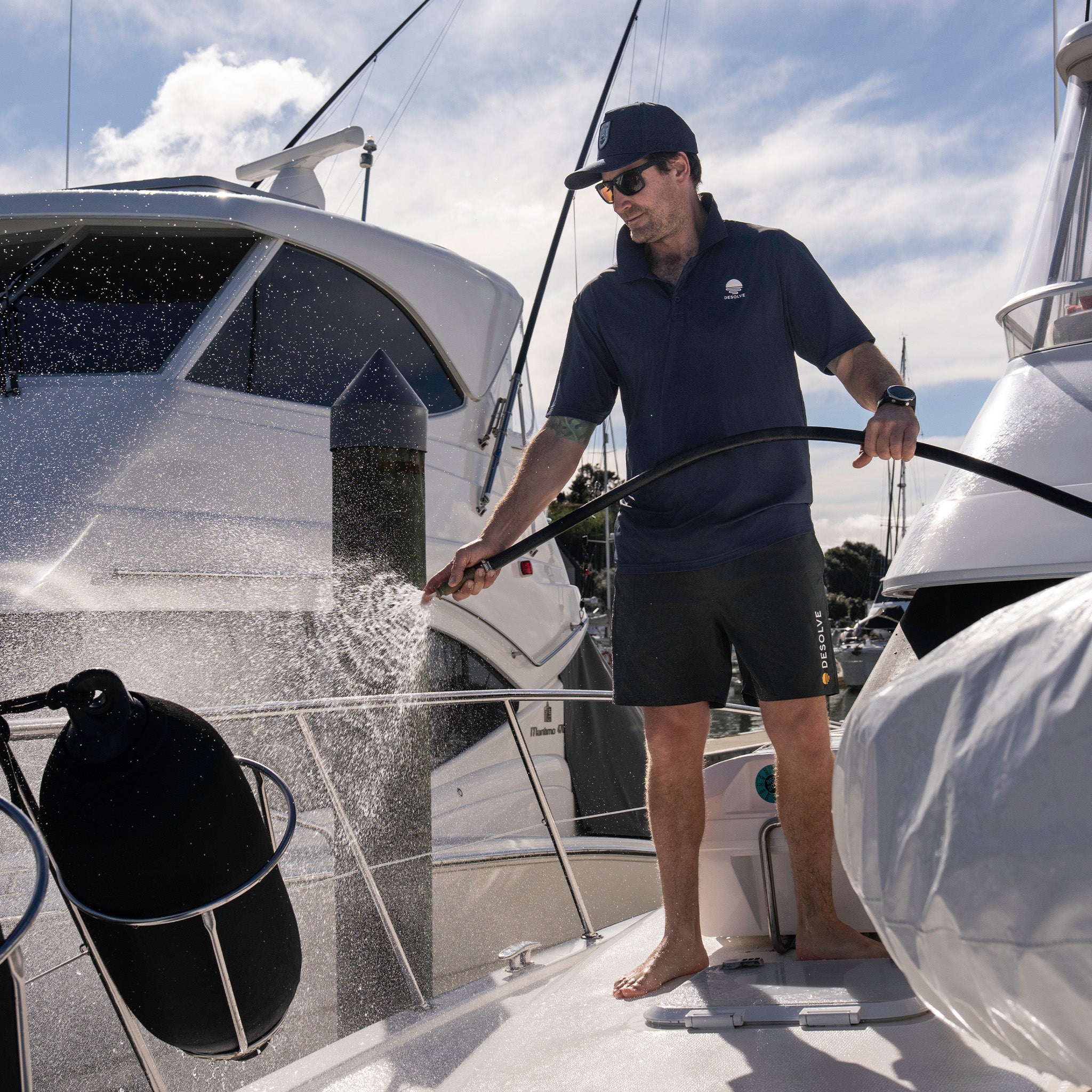
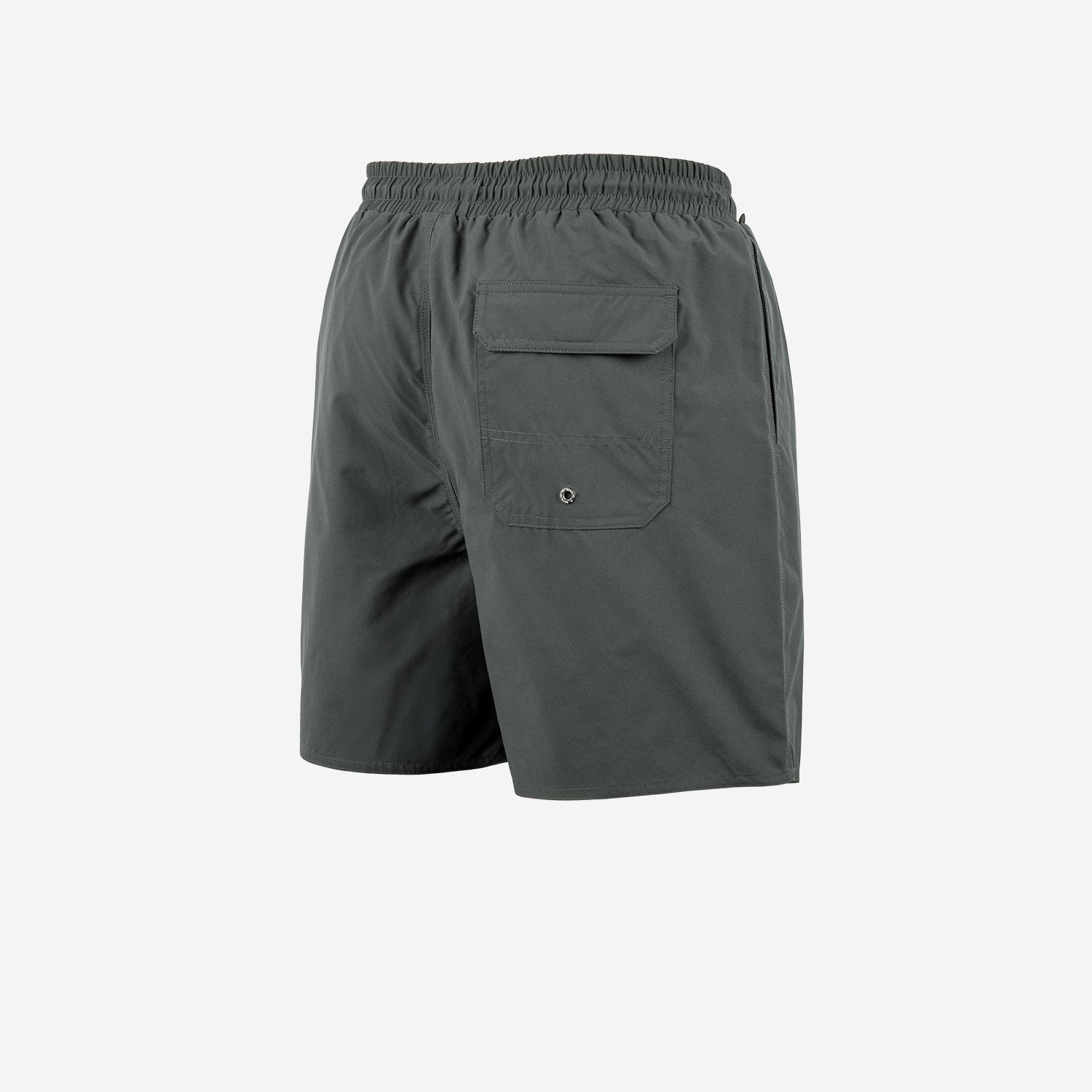
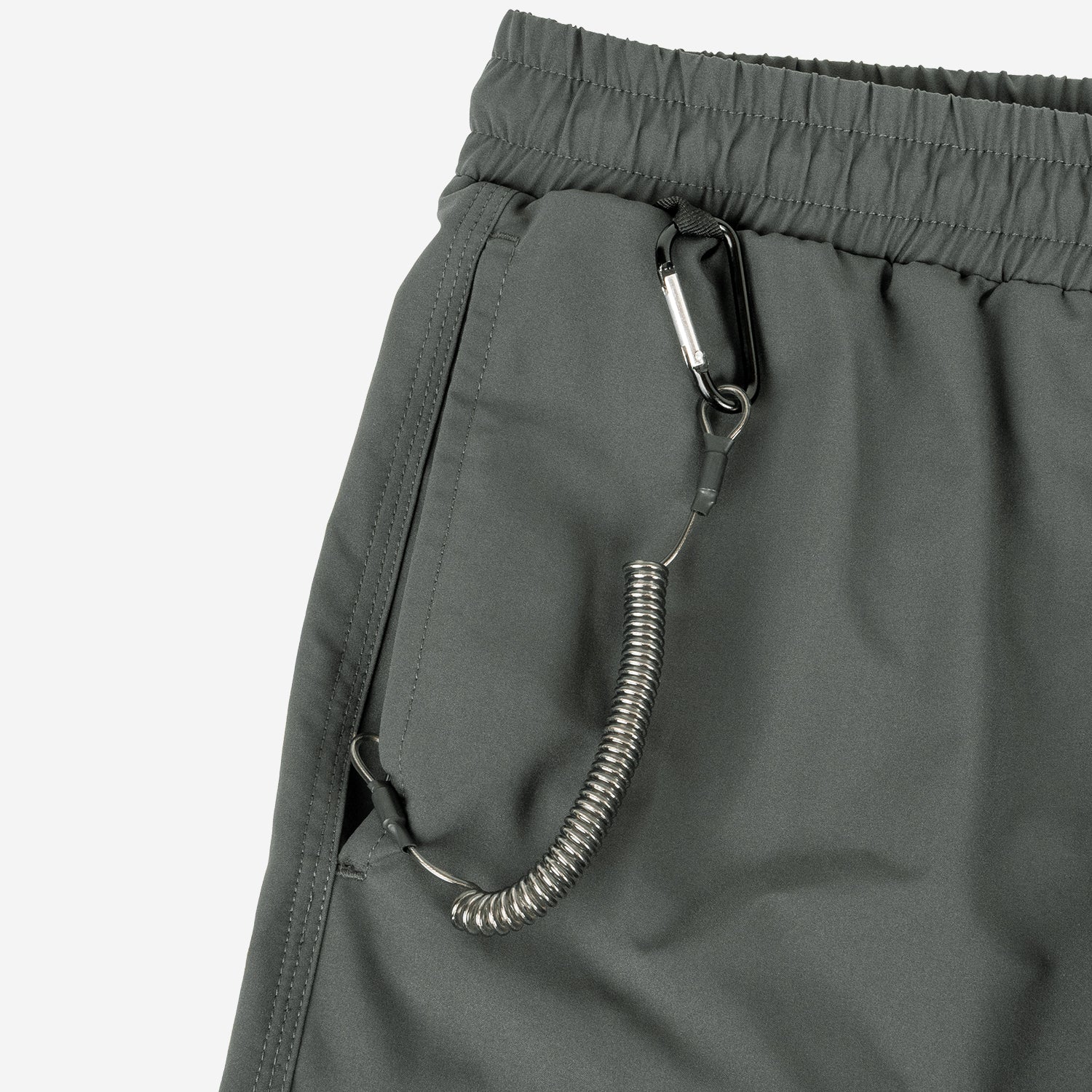
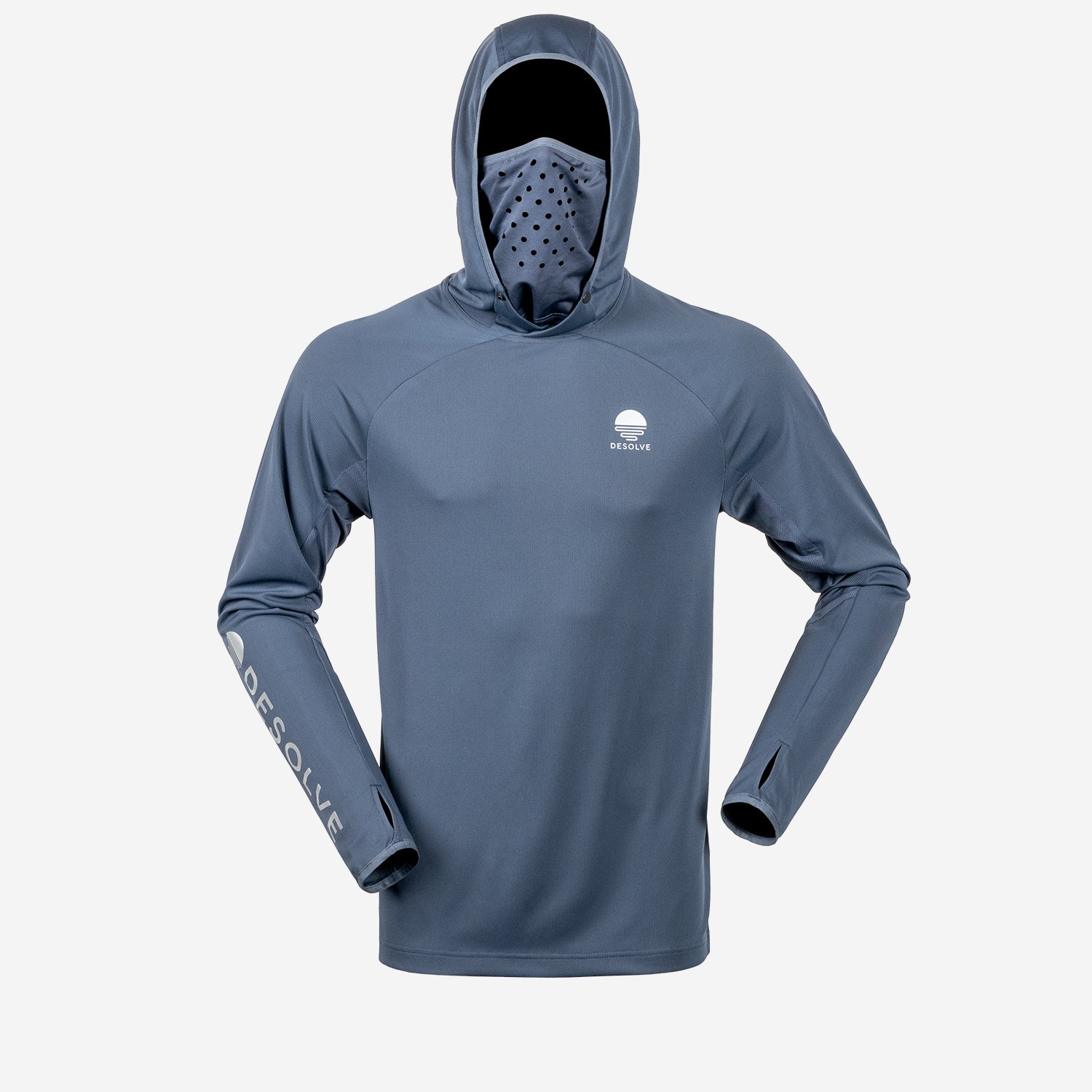
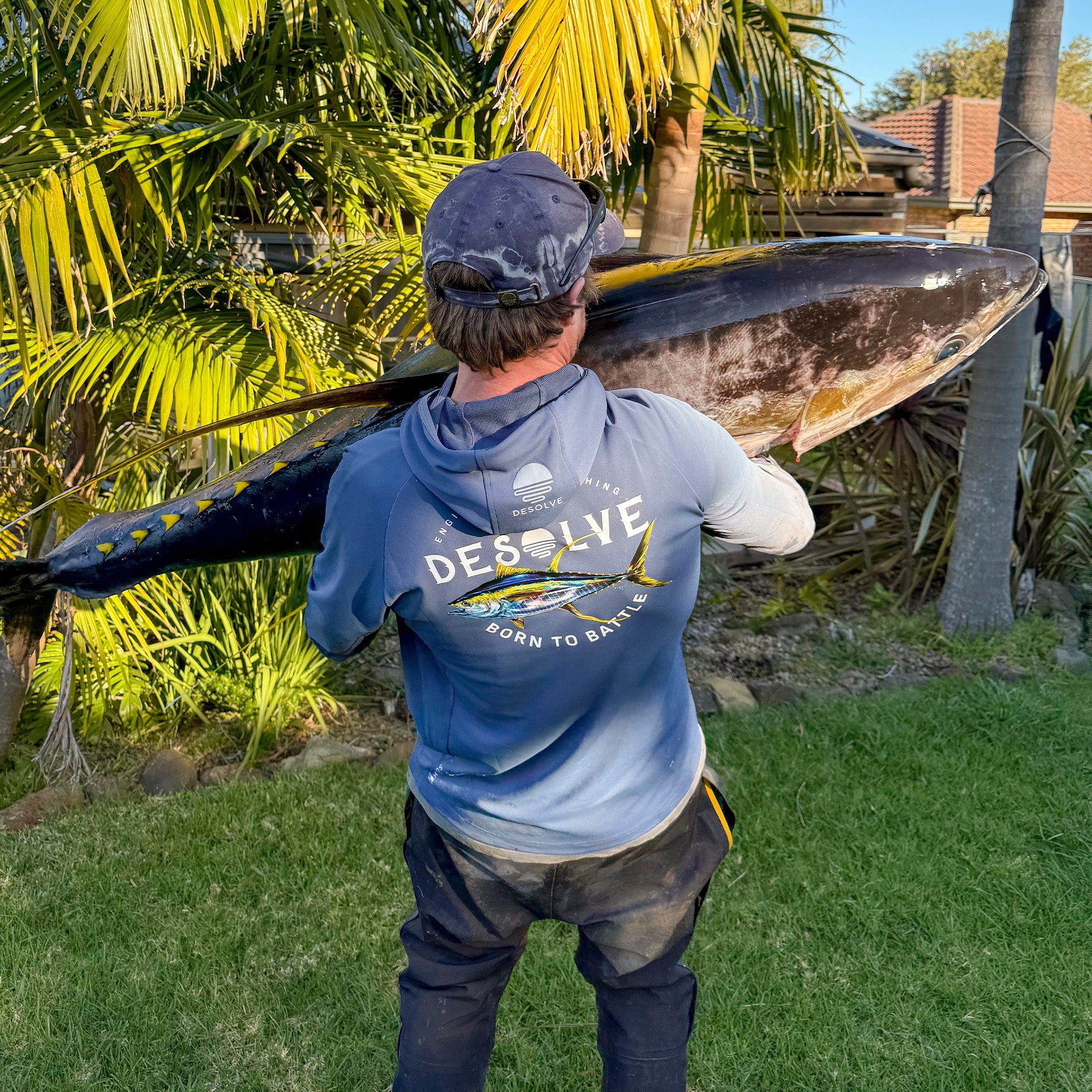
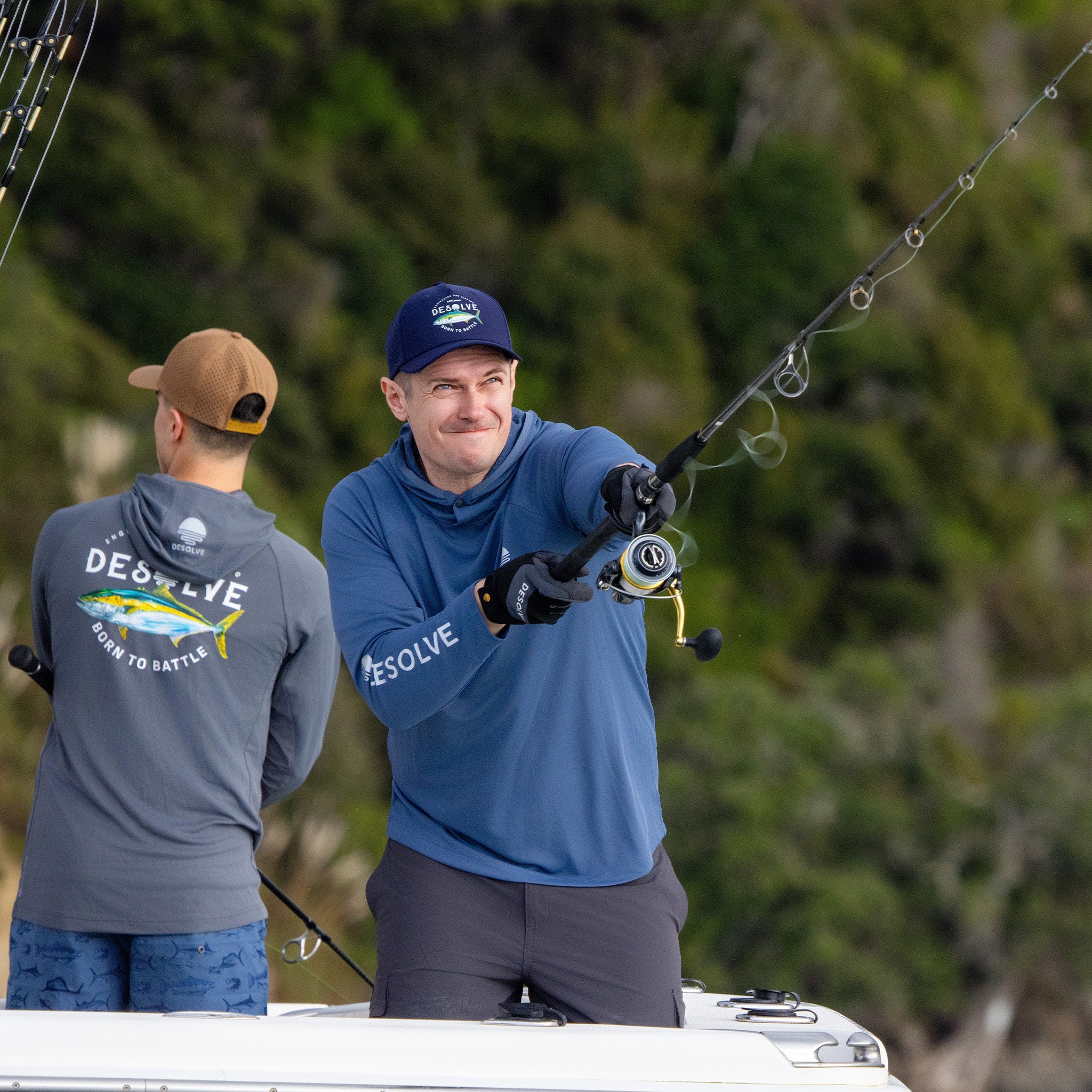
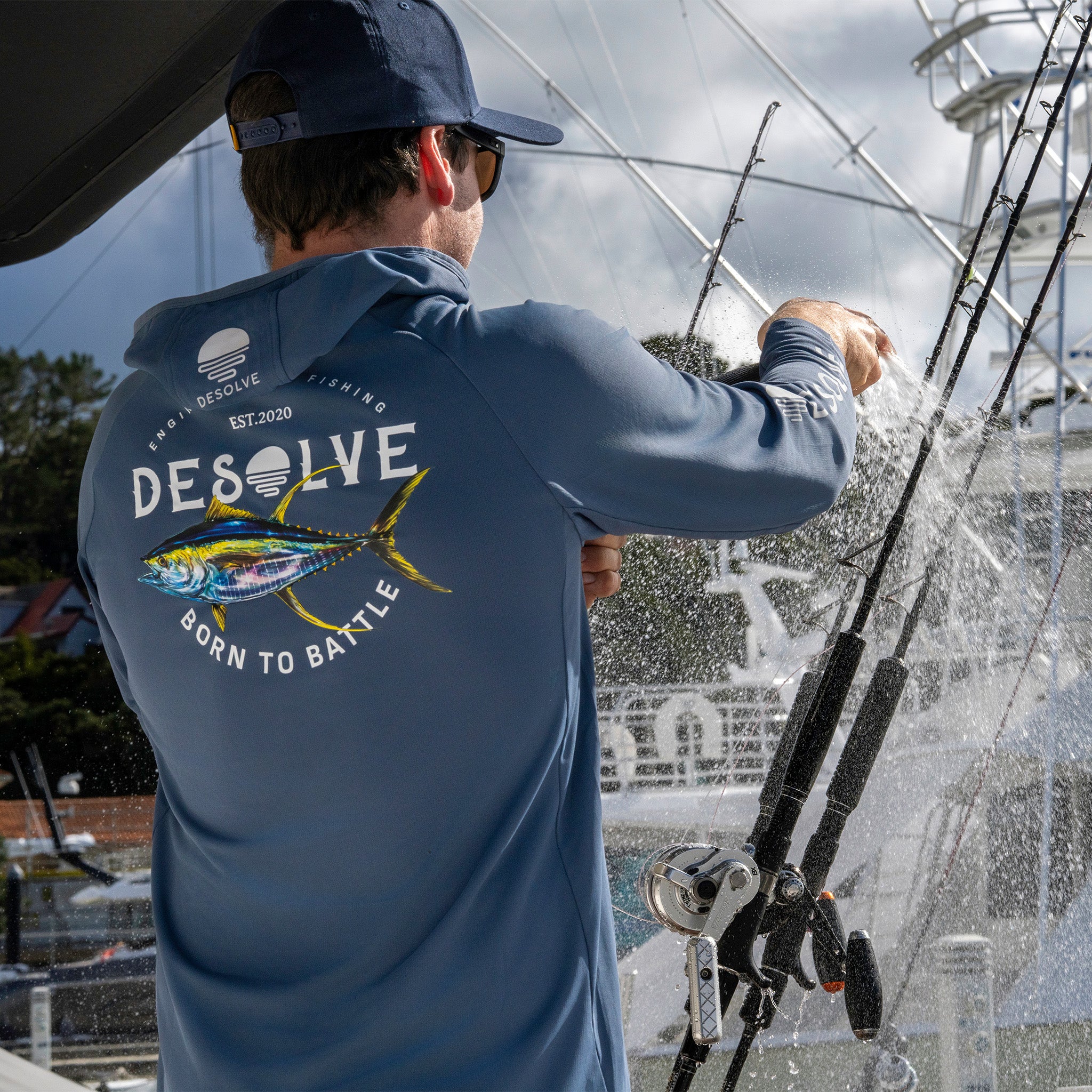
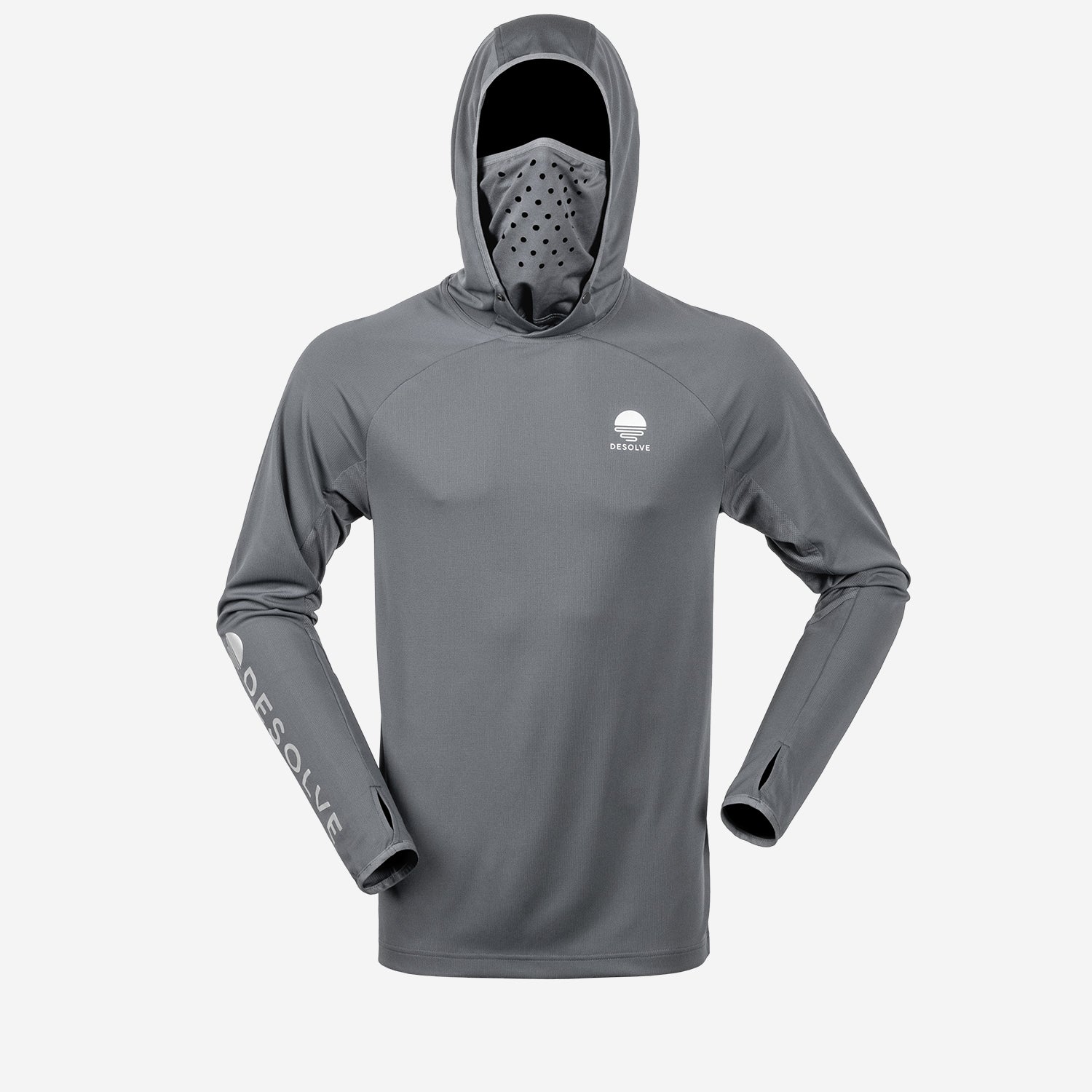
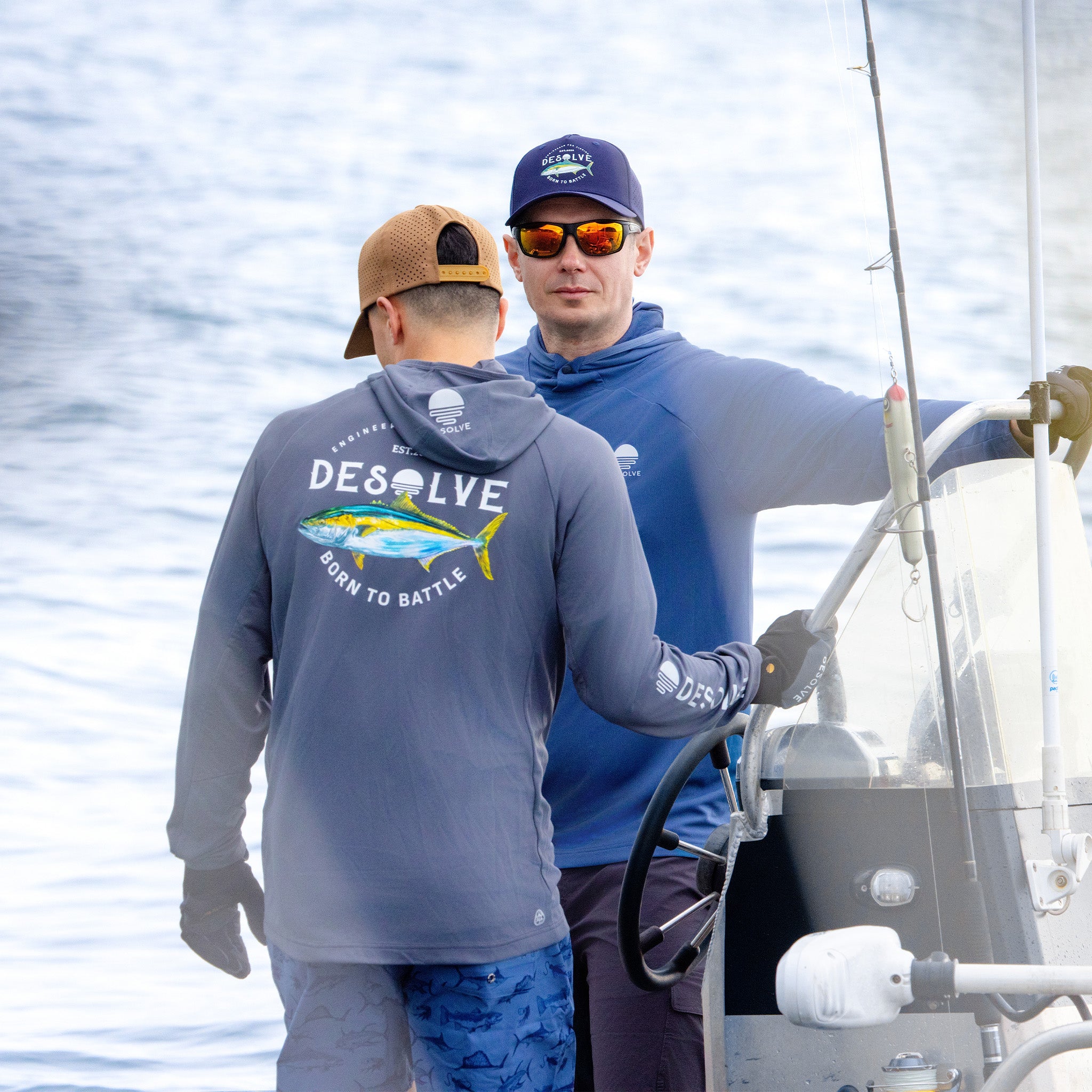
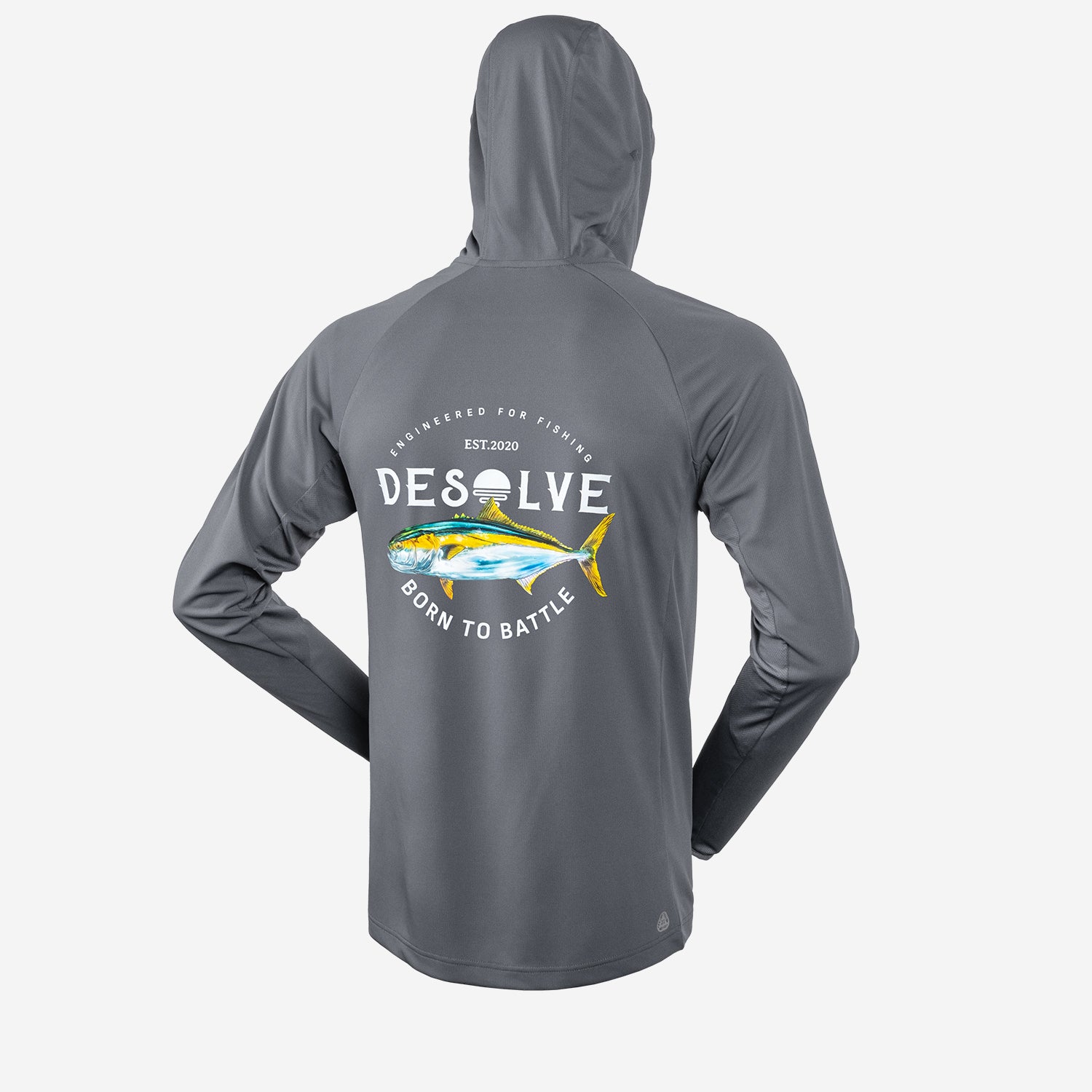
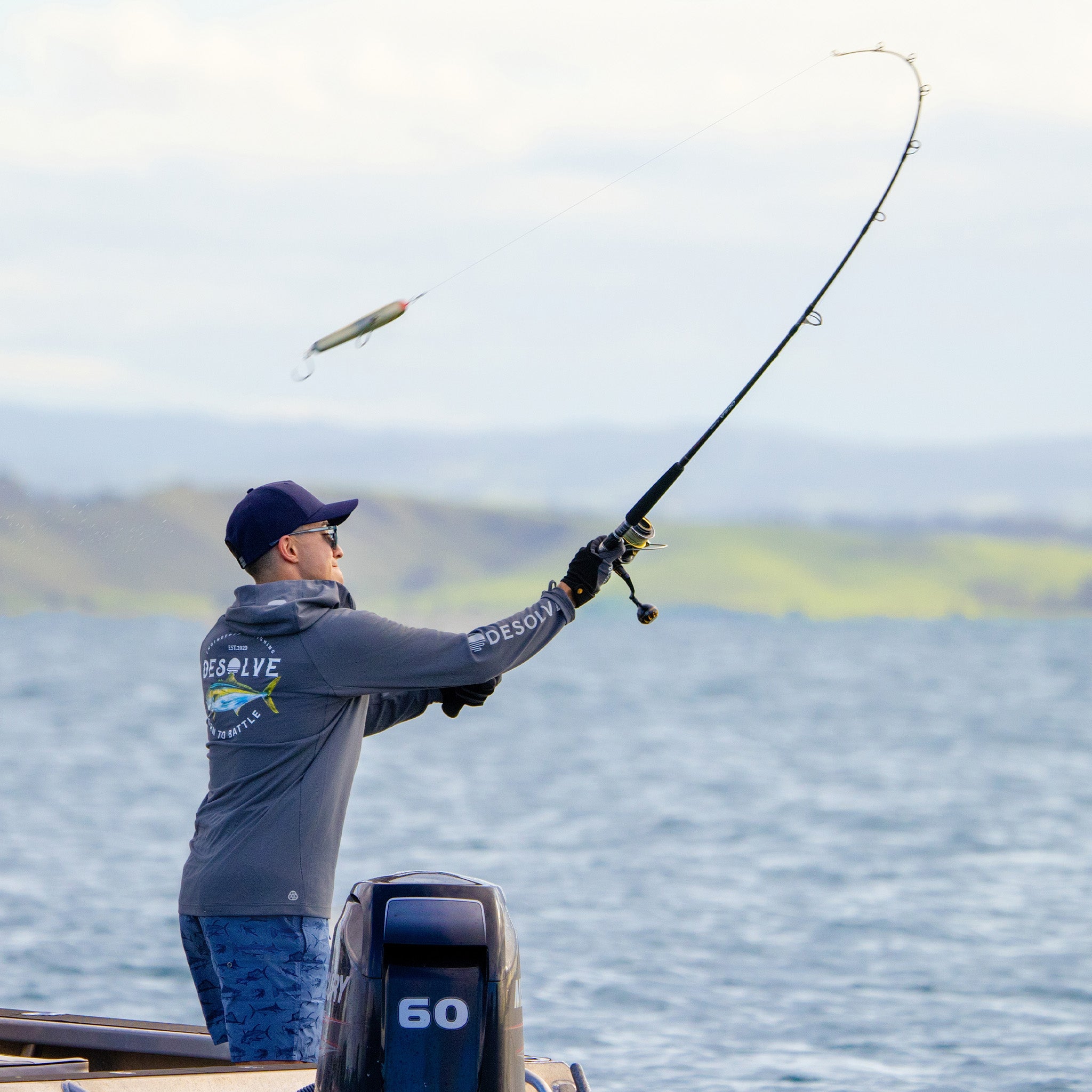
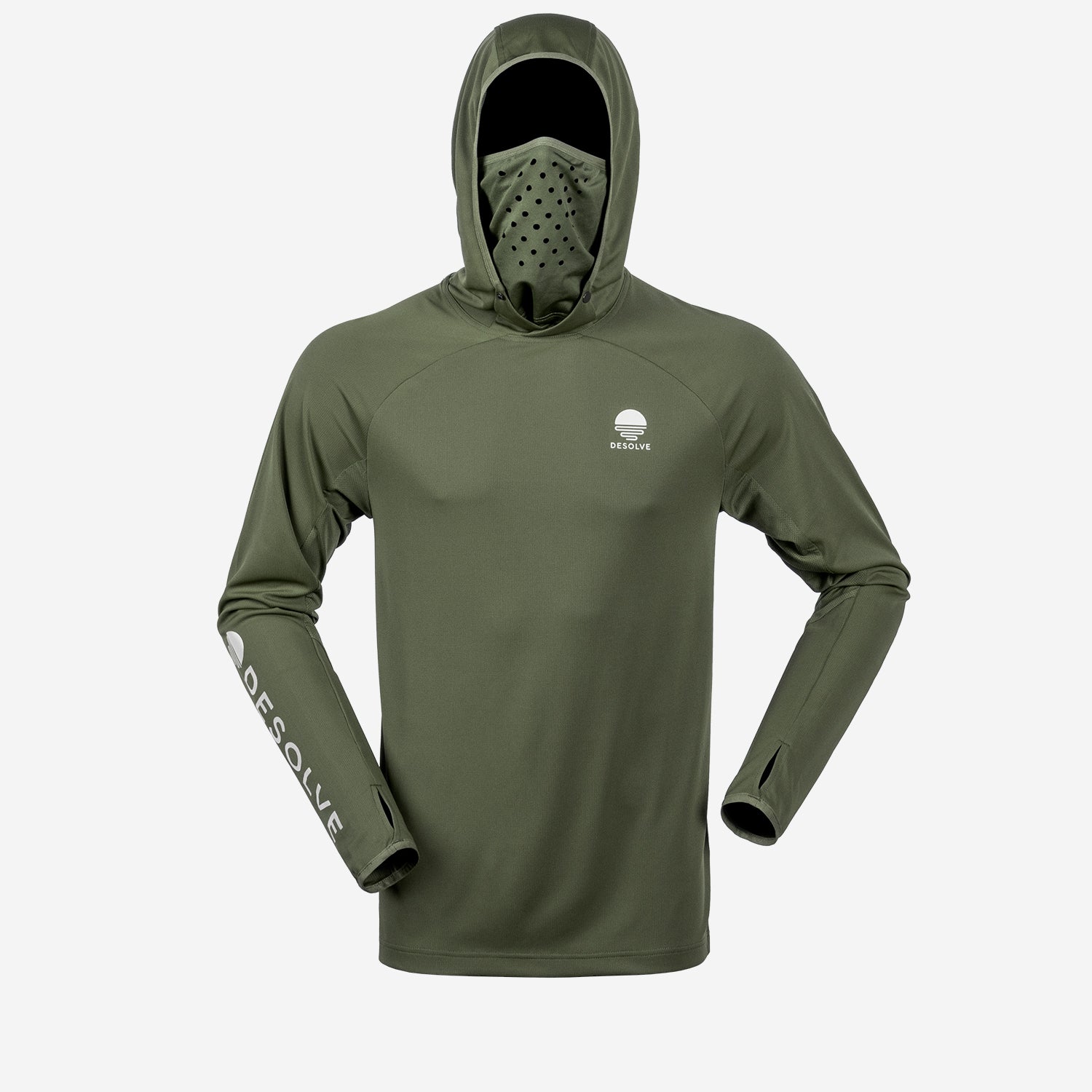
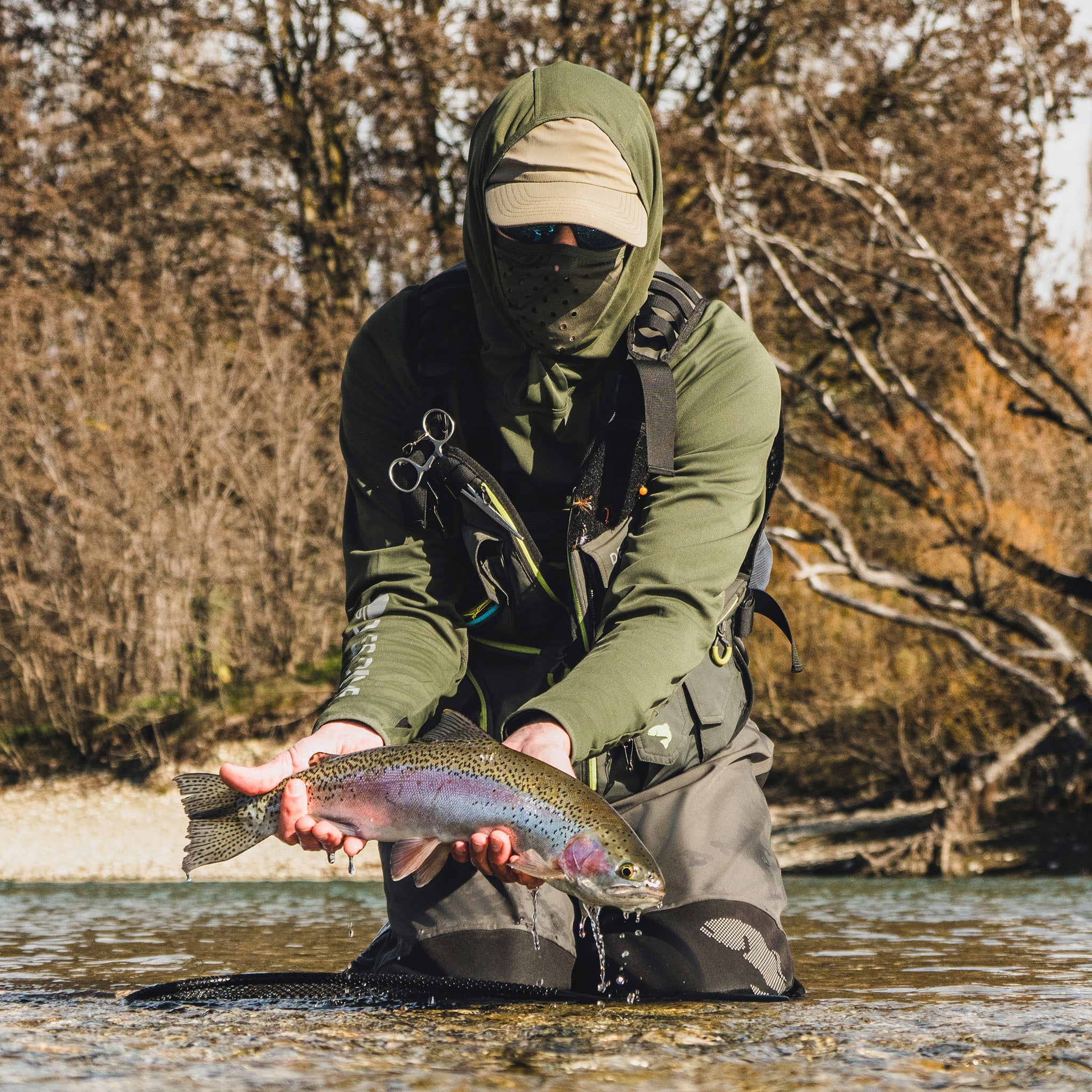
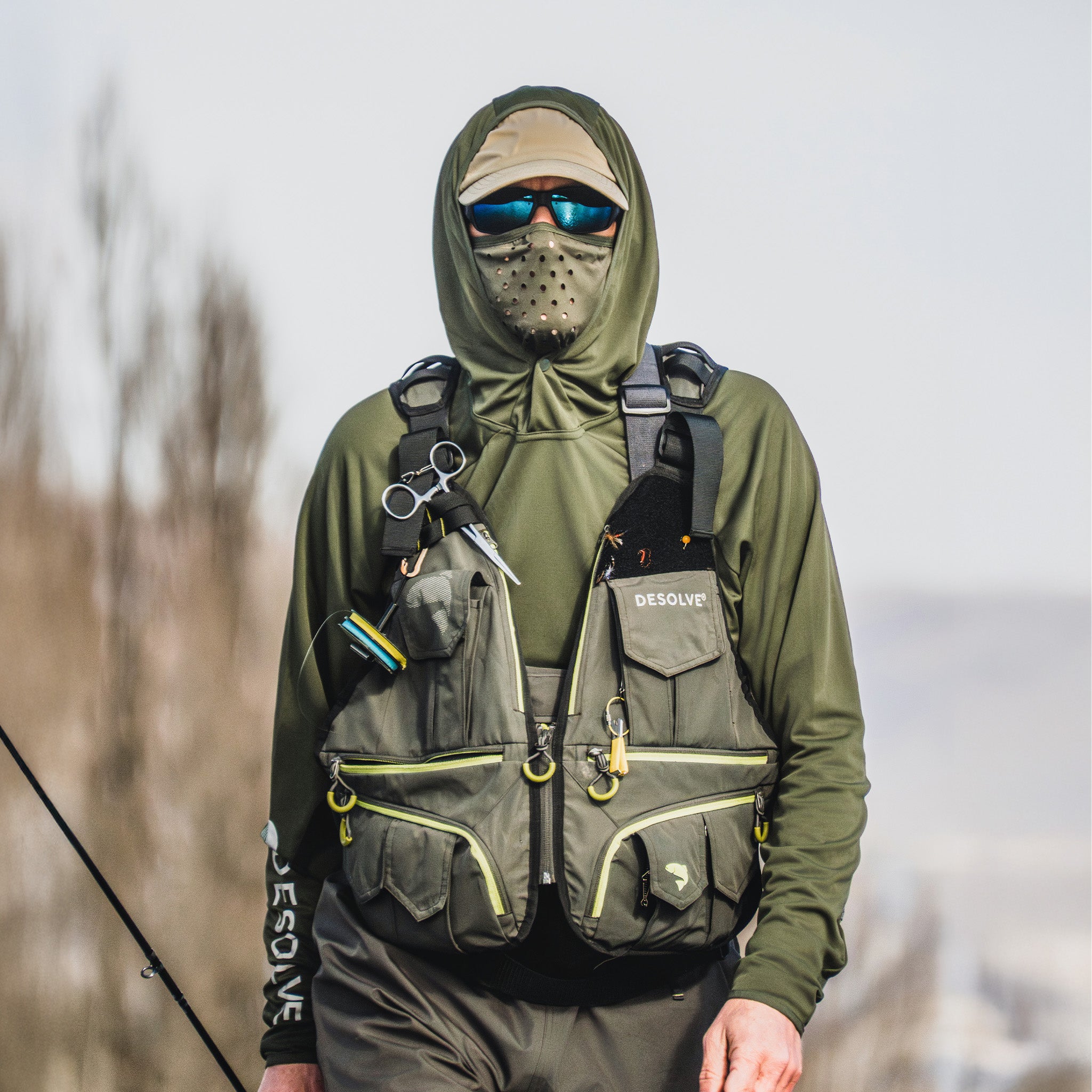
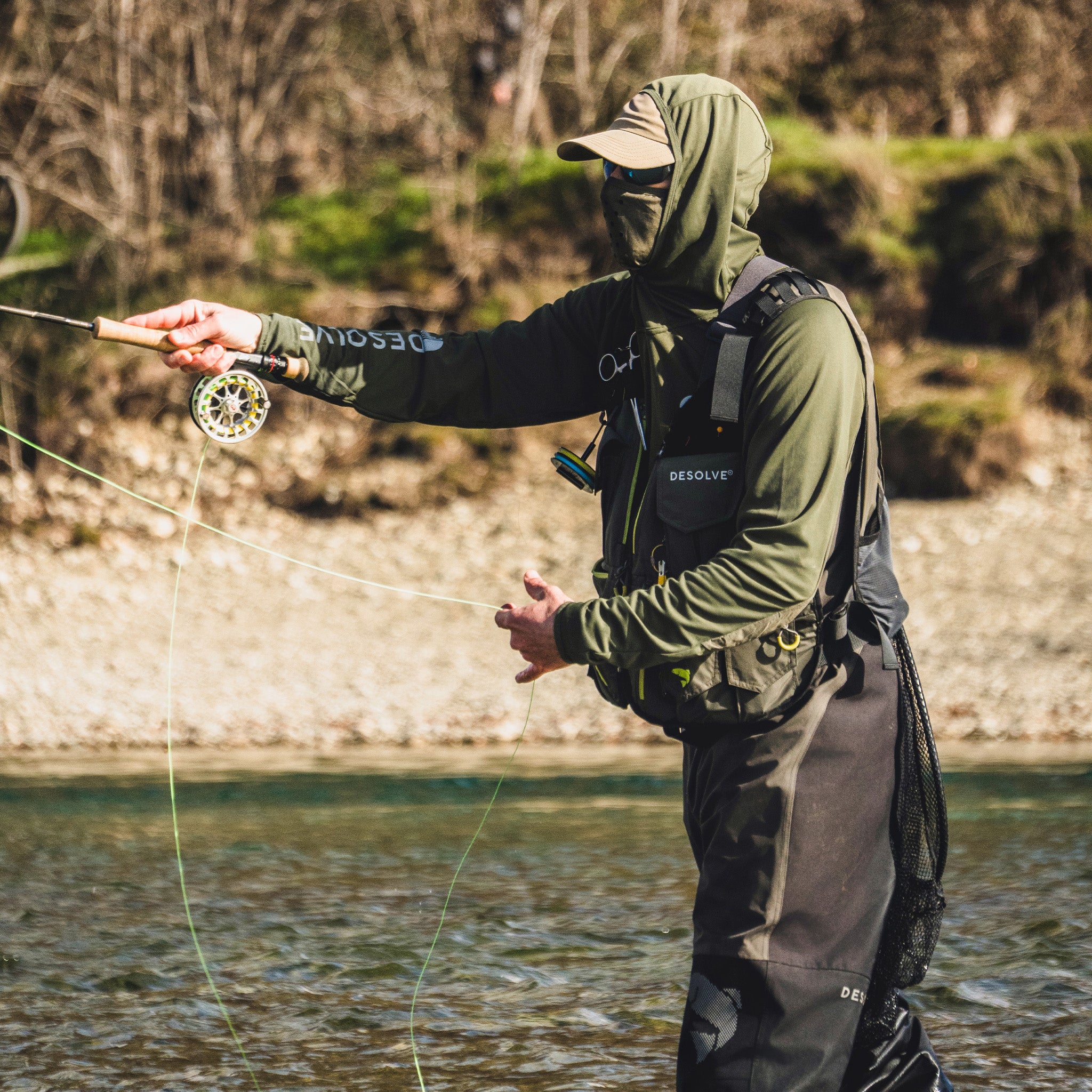
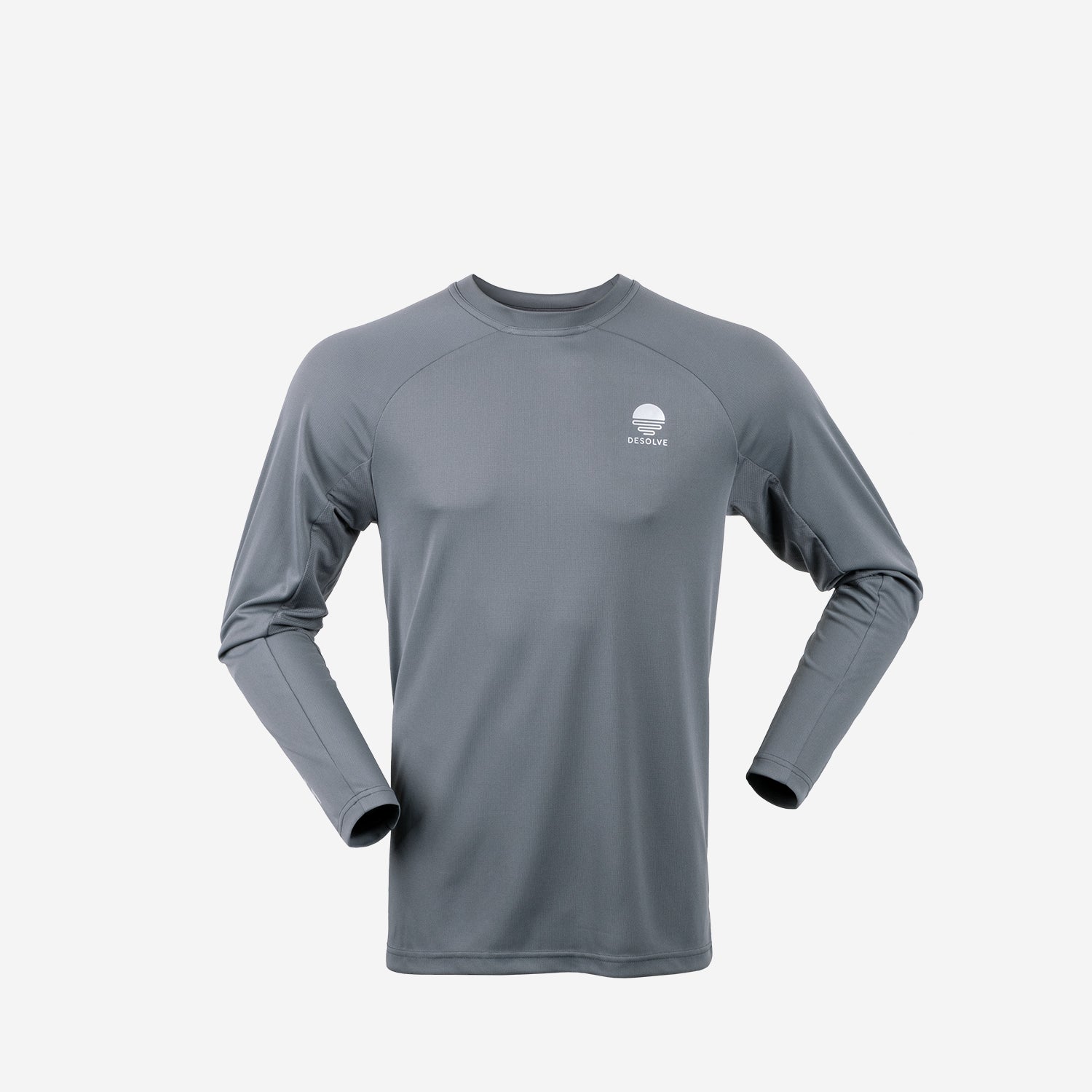
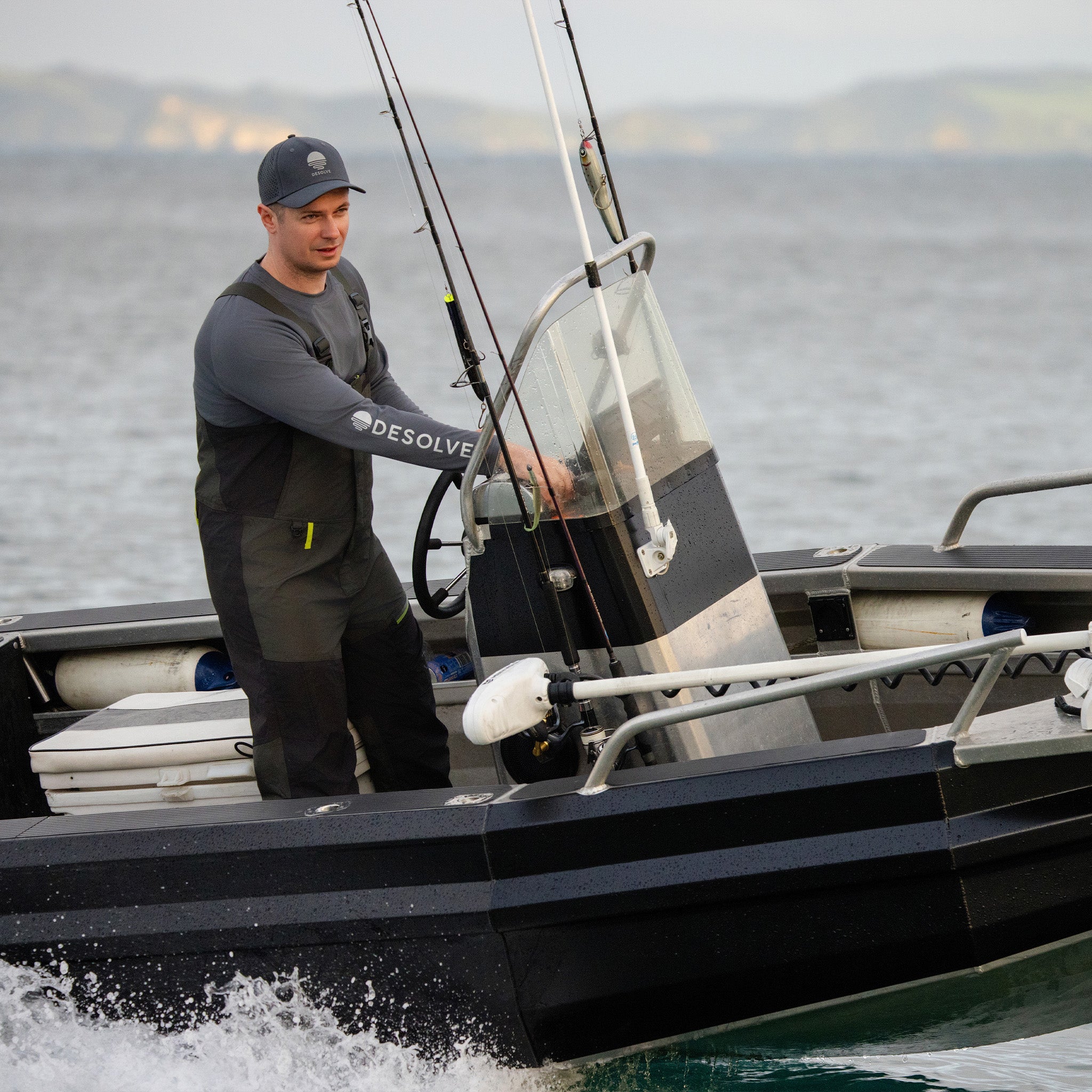
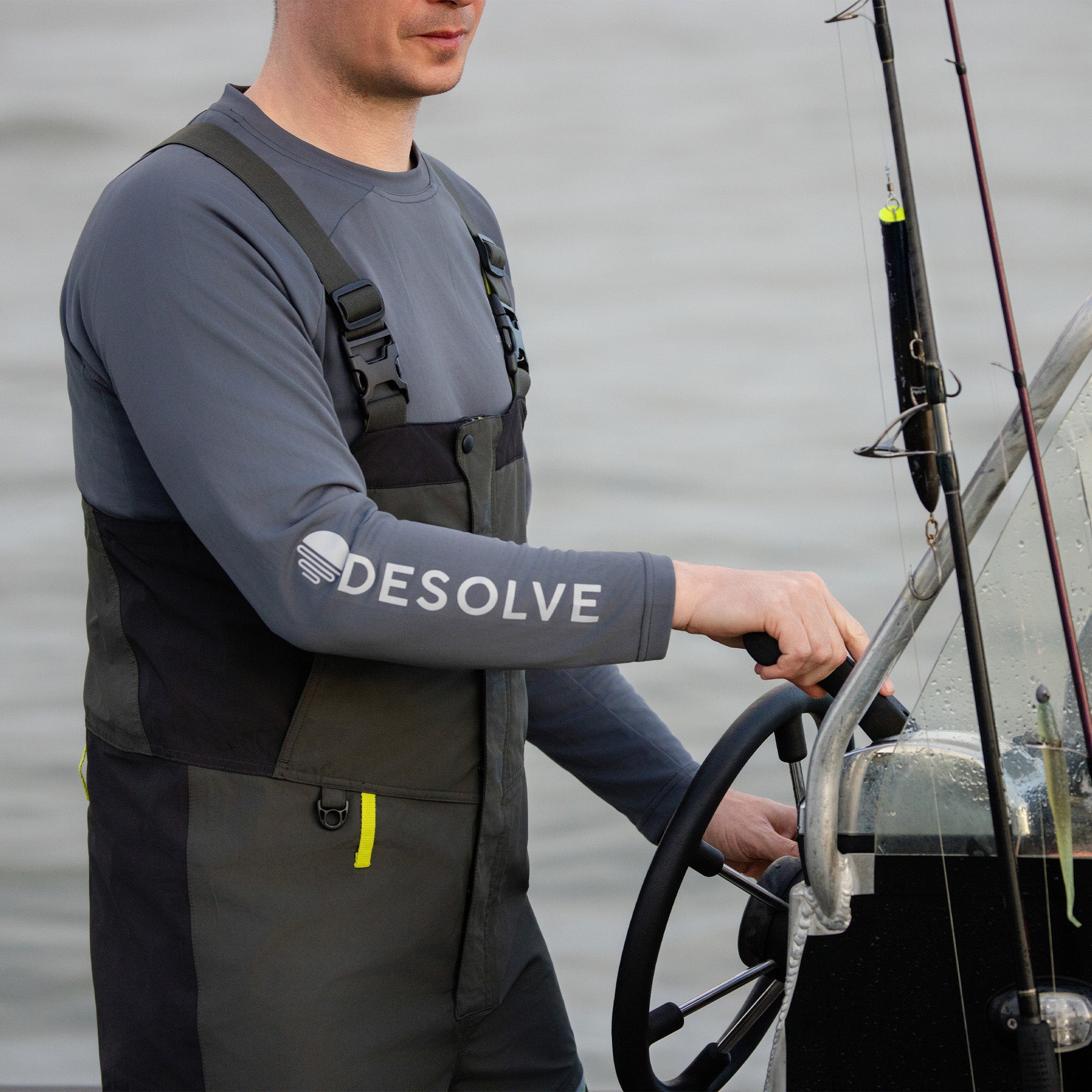
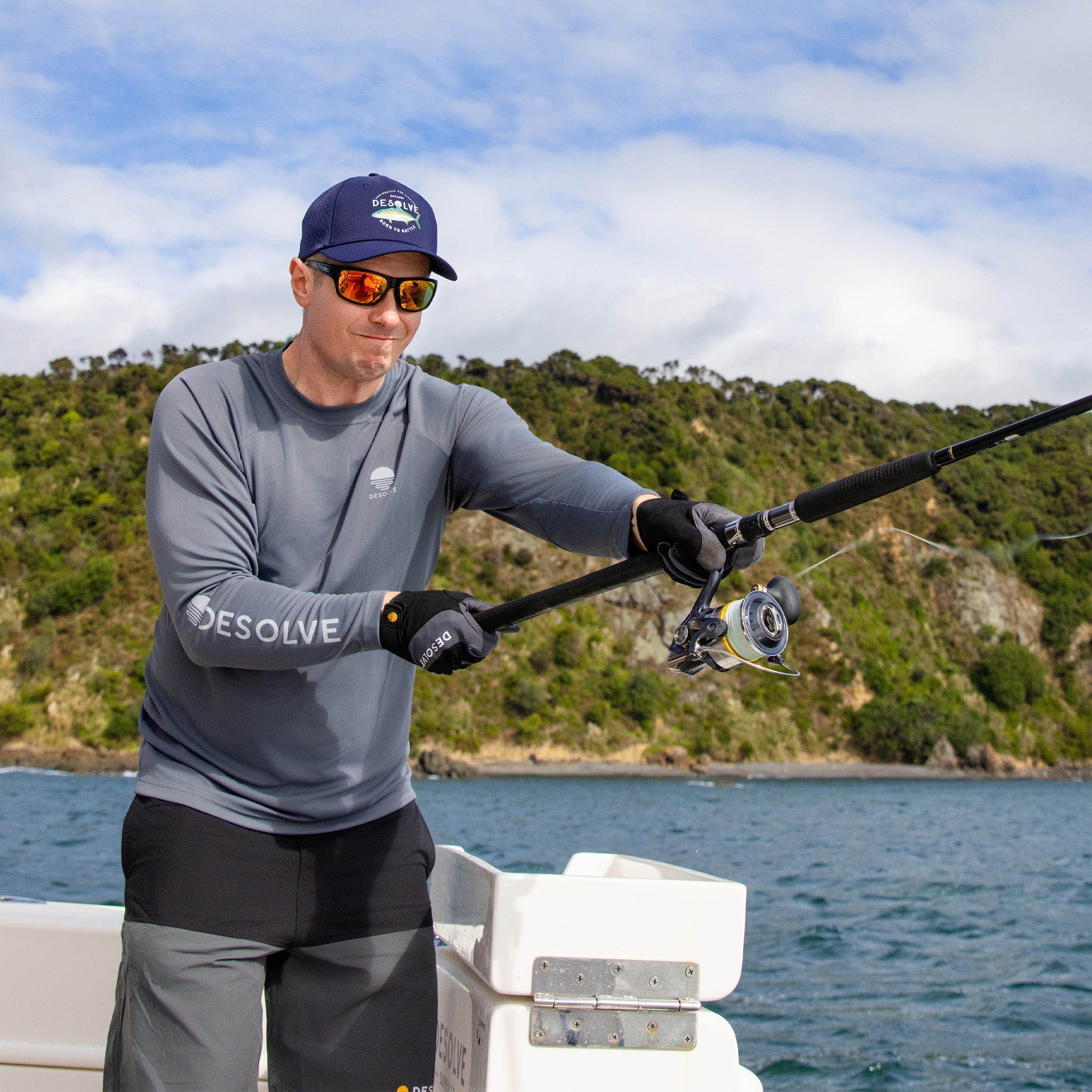
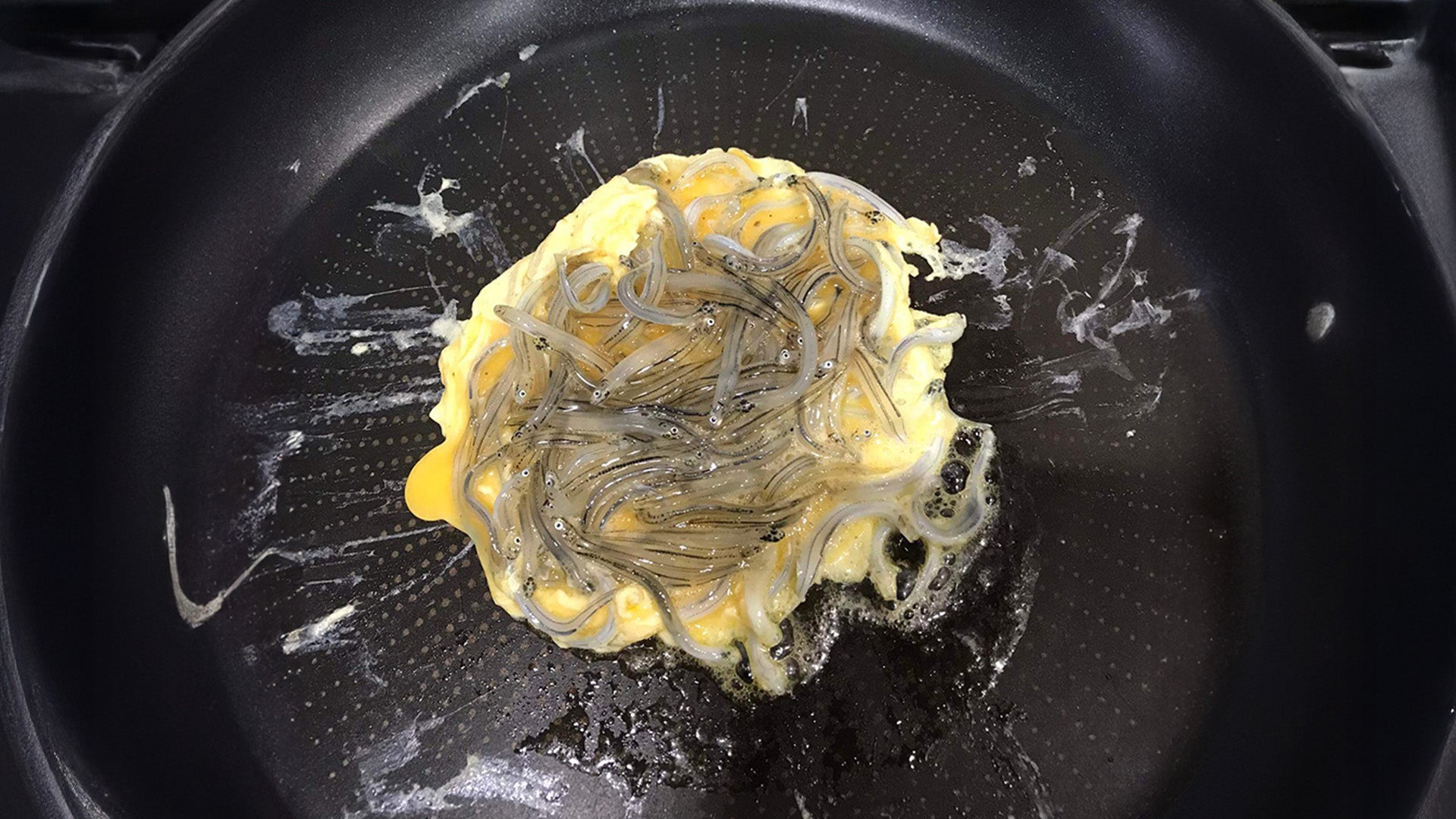
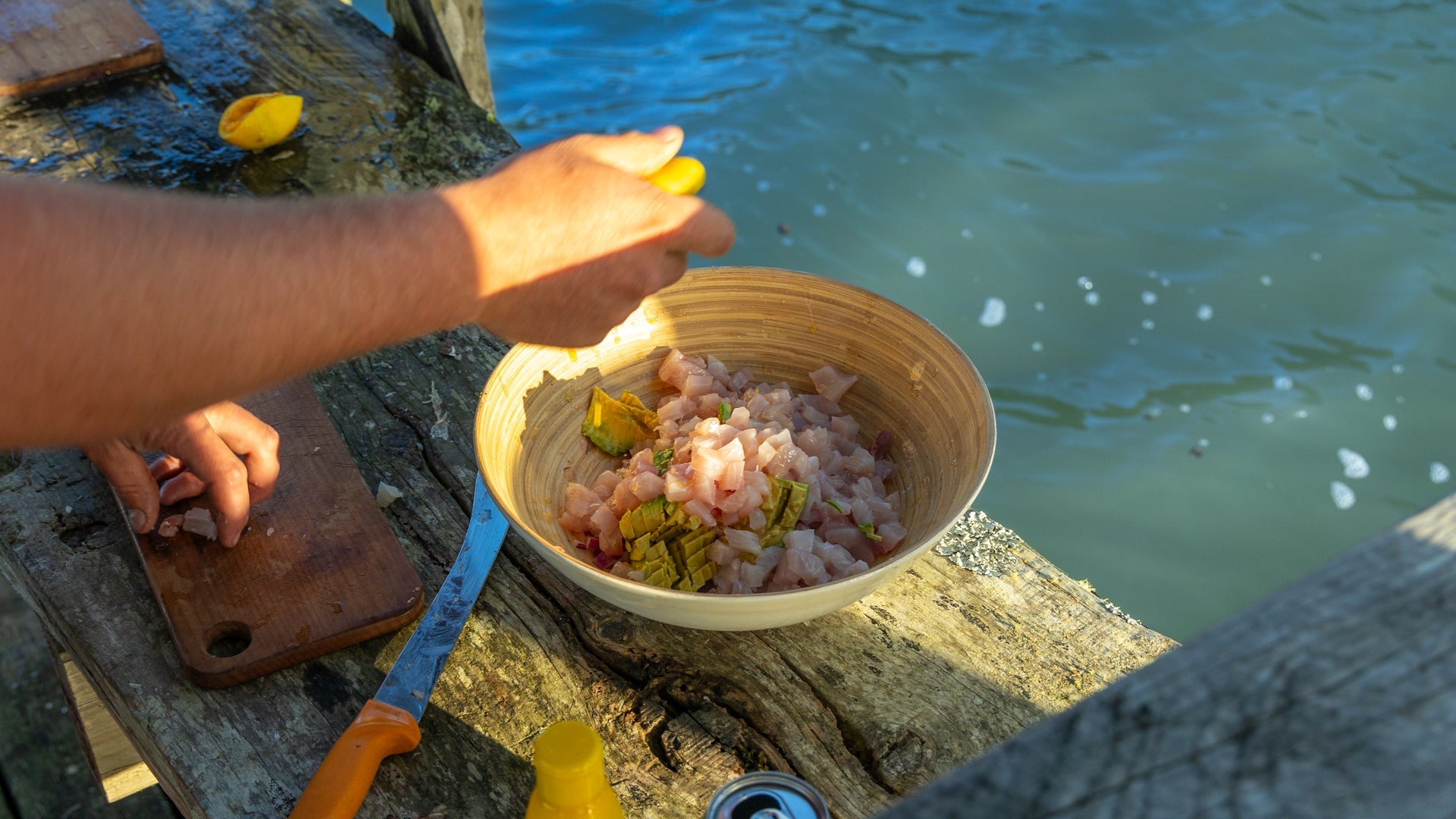
Share: